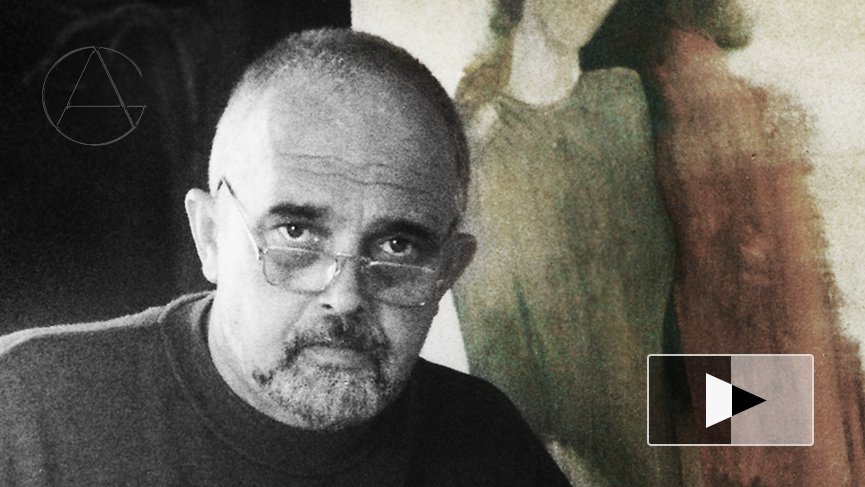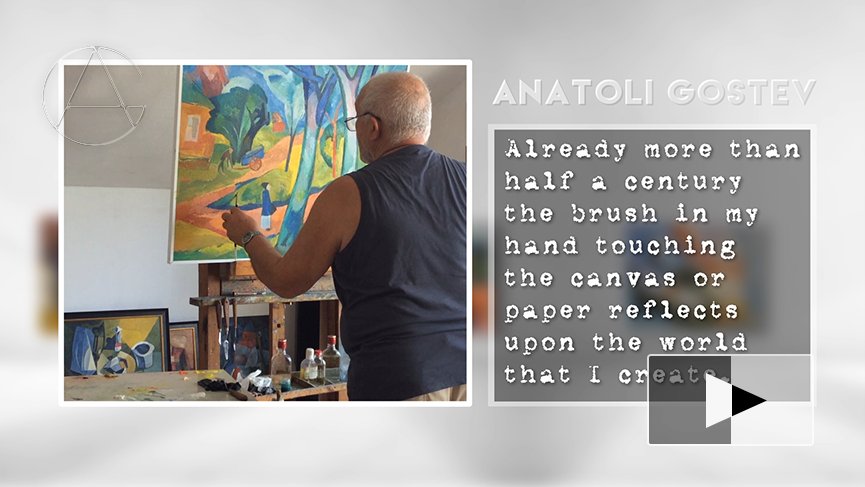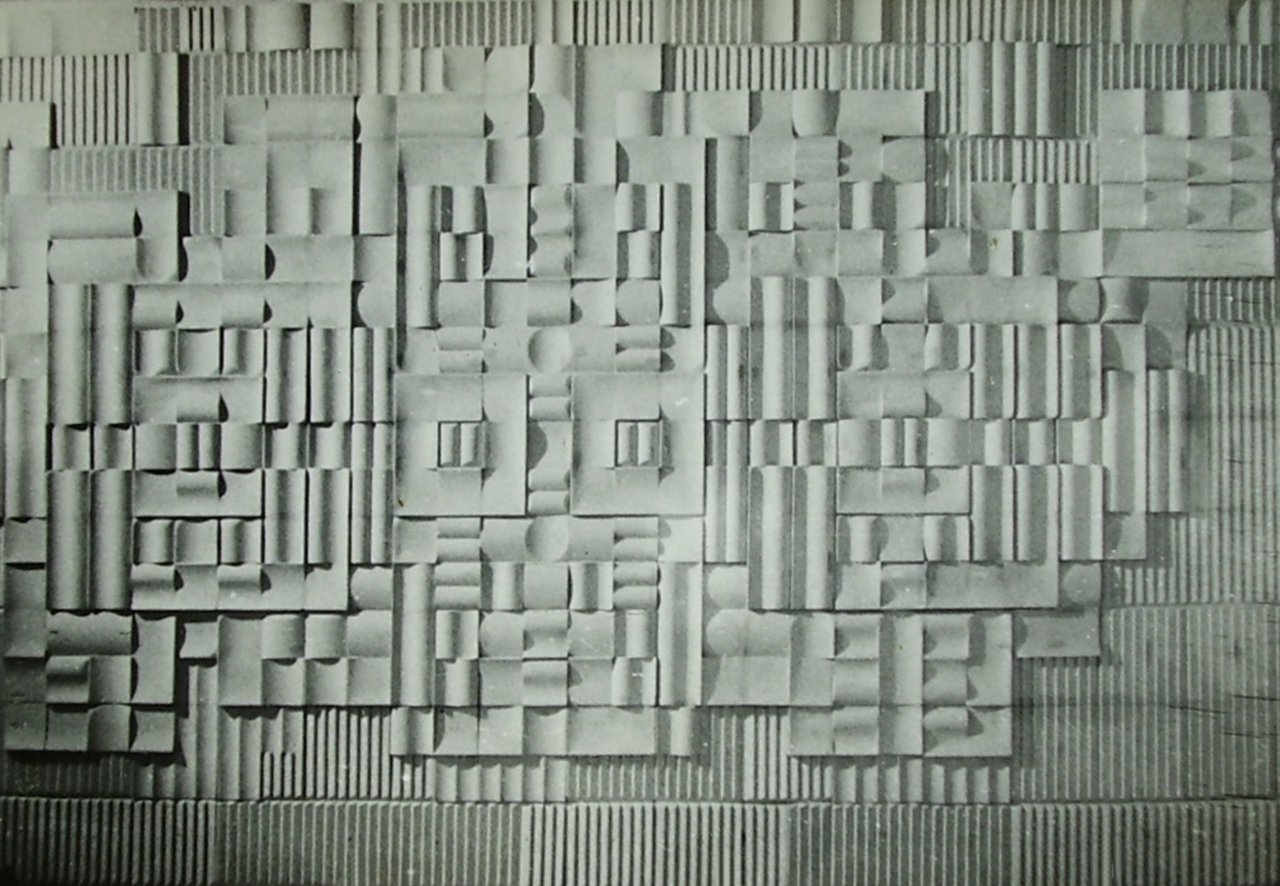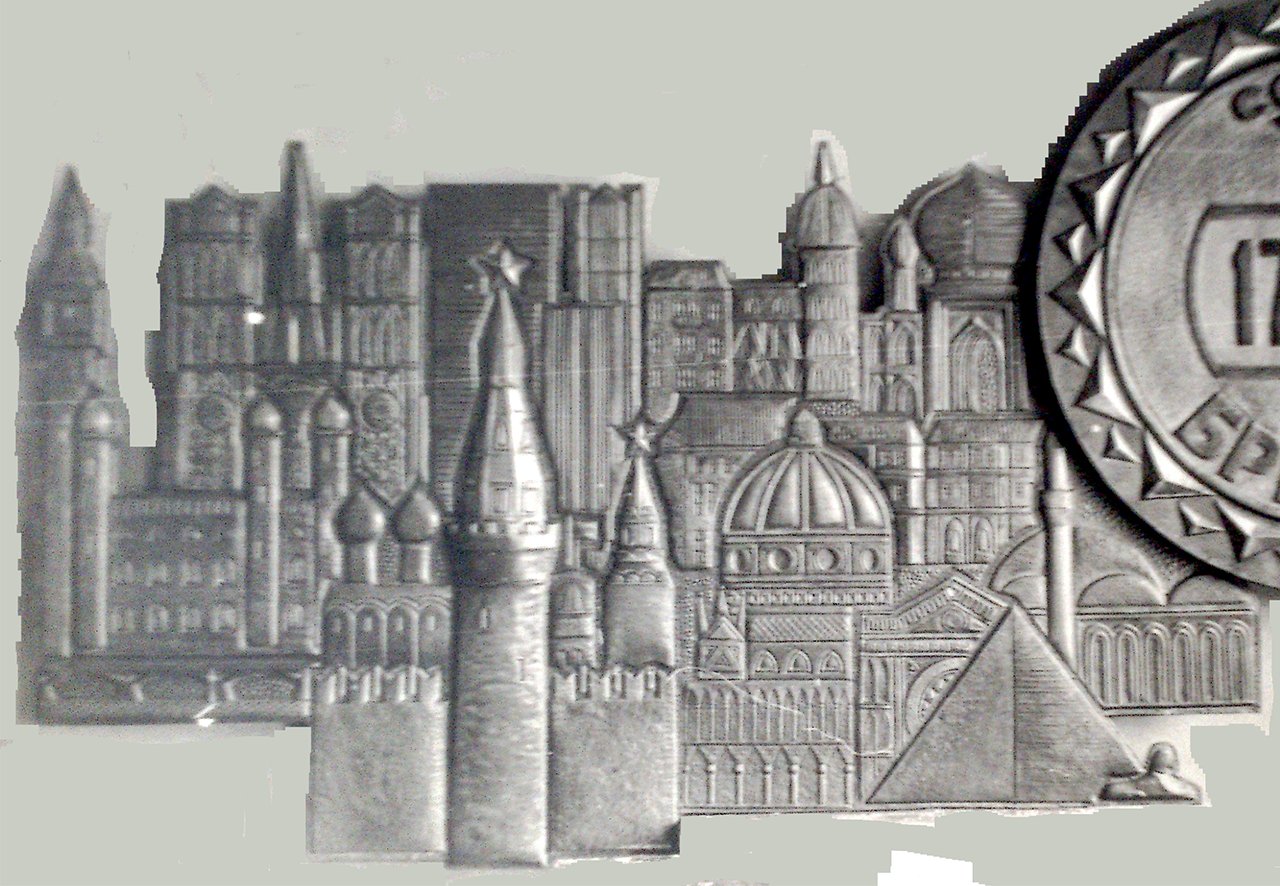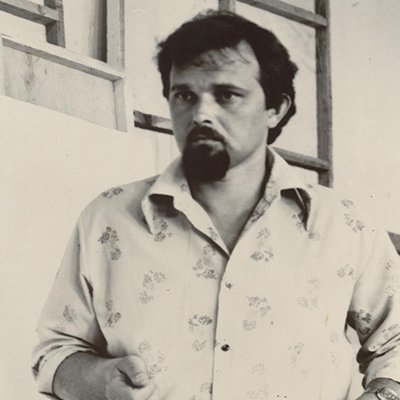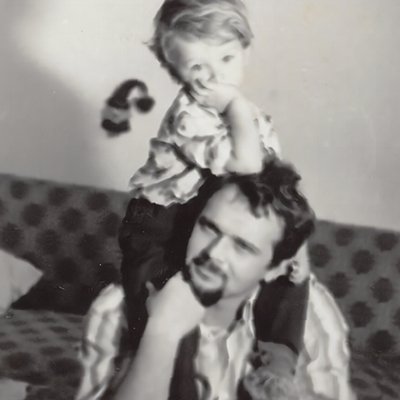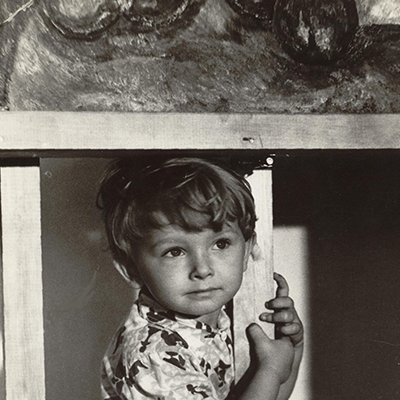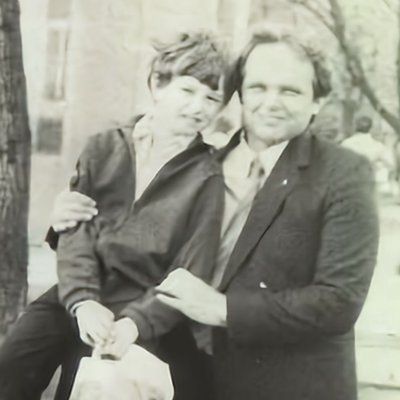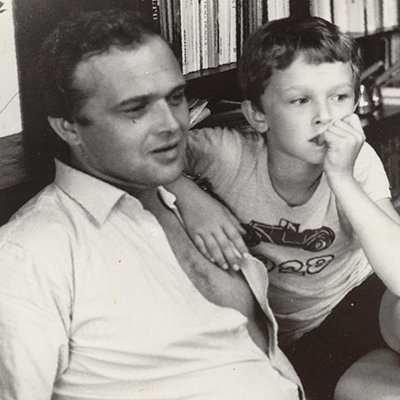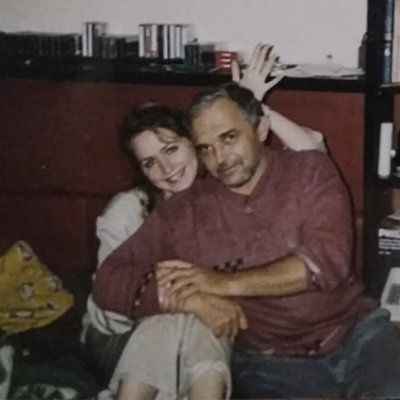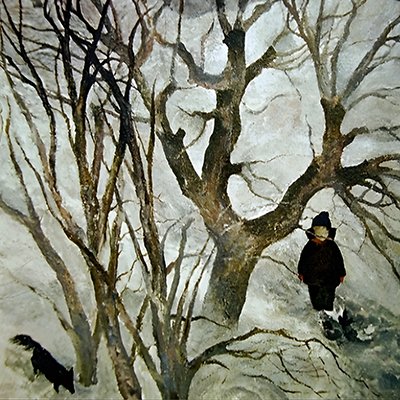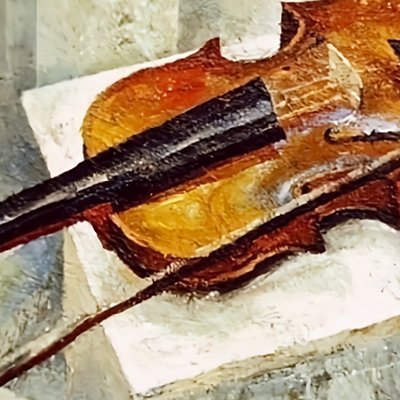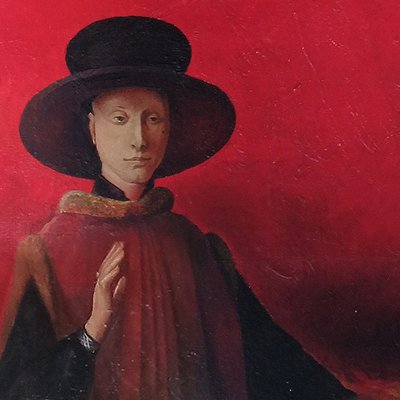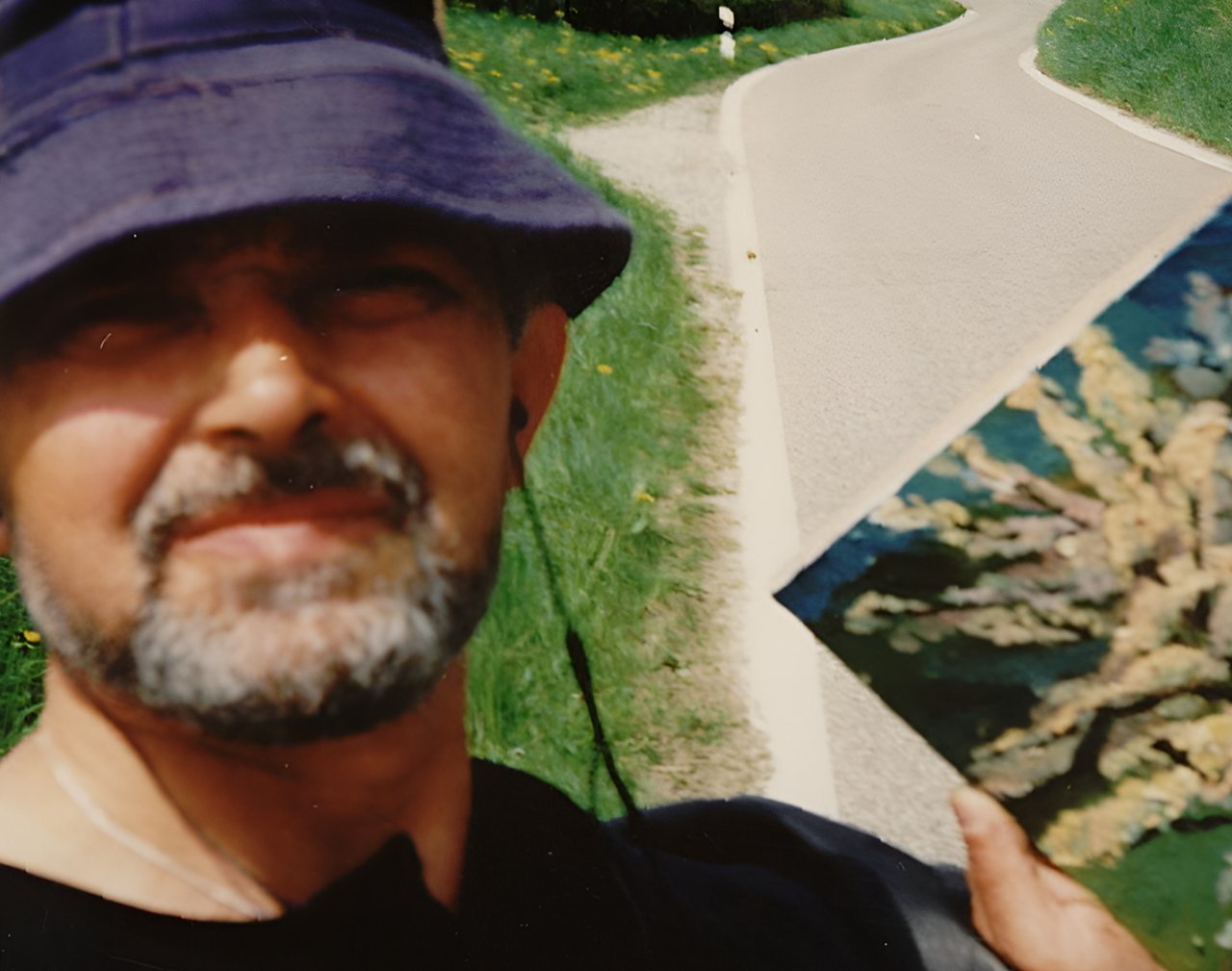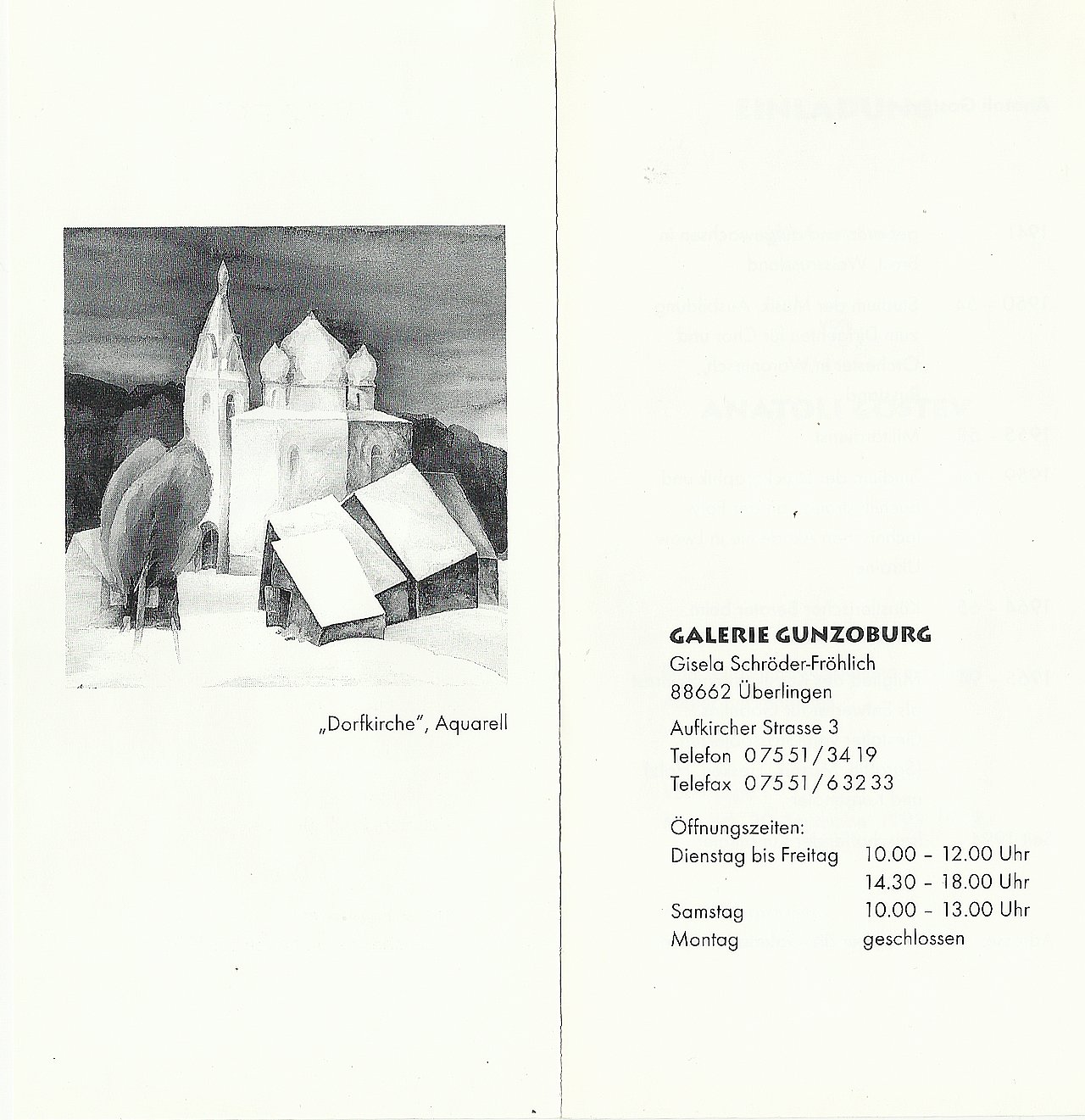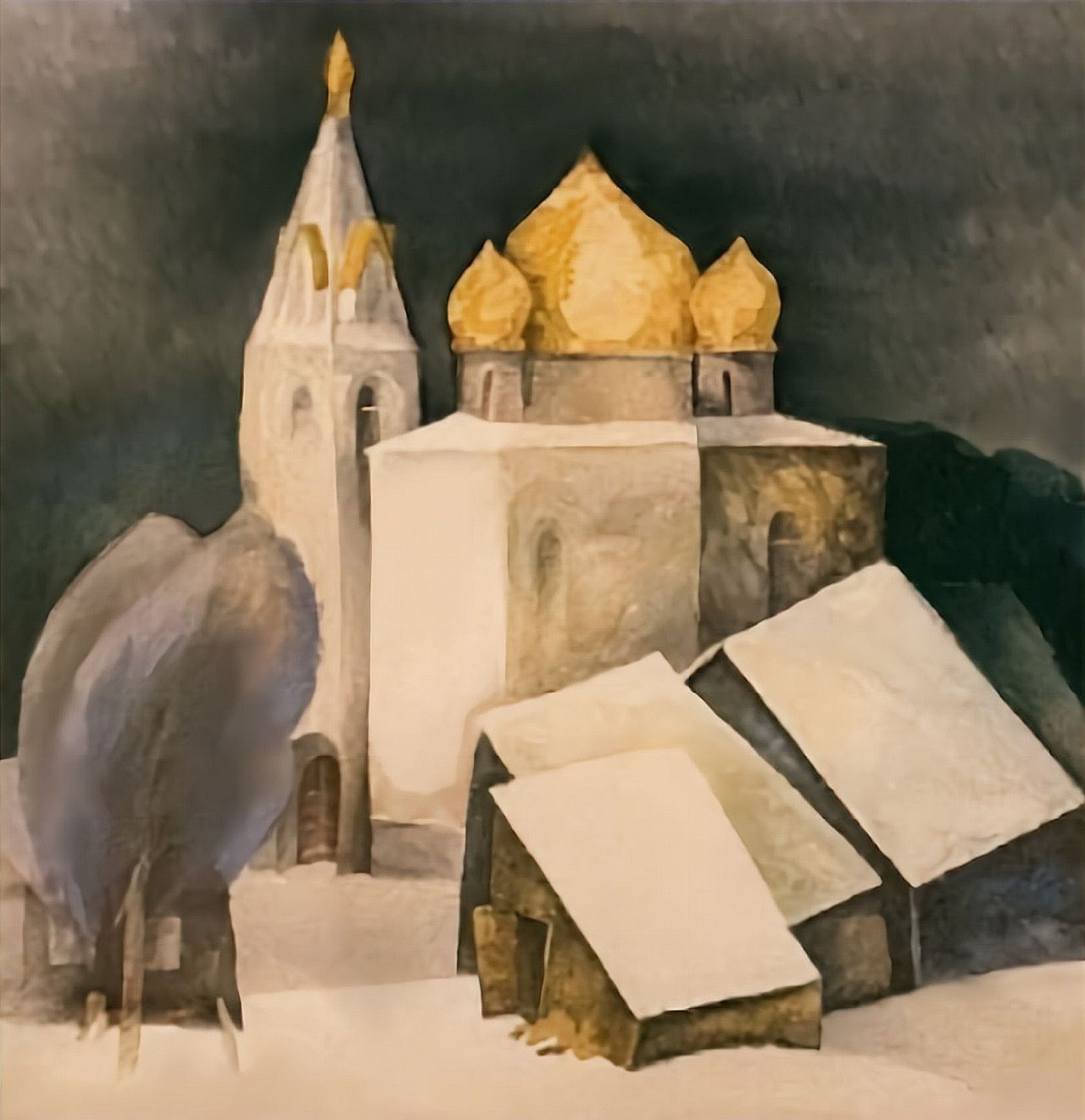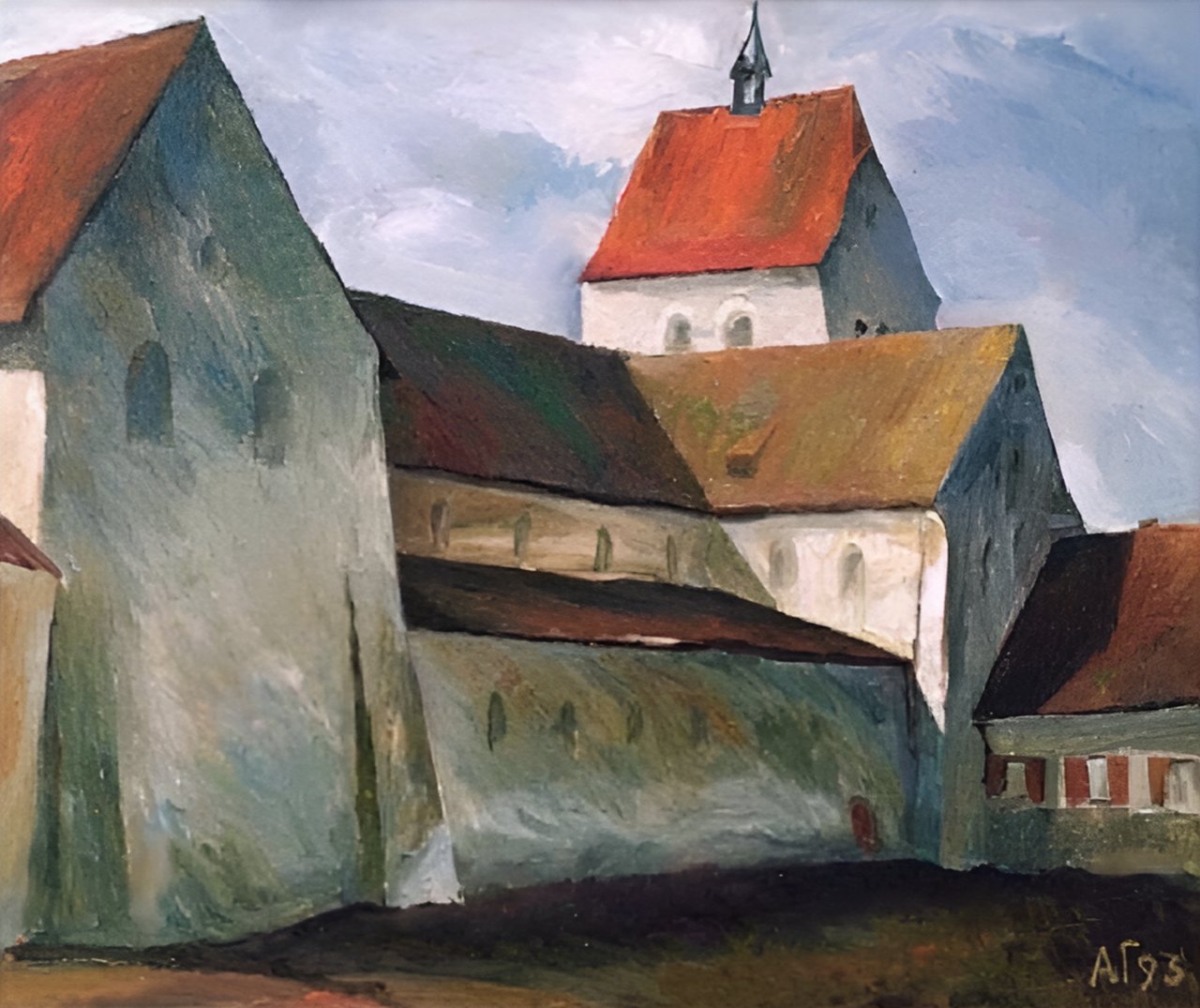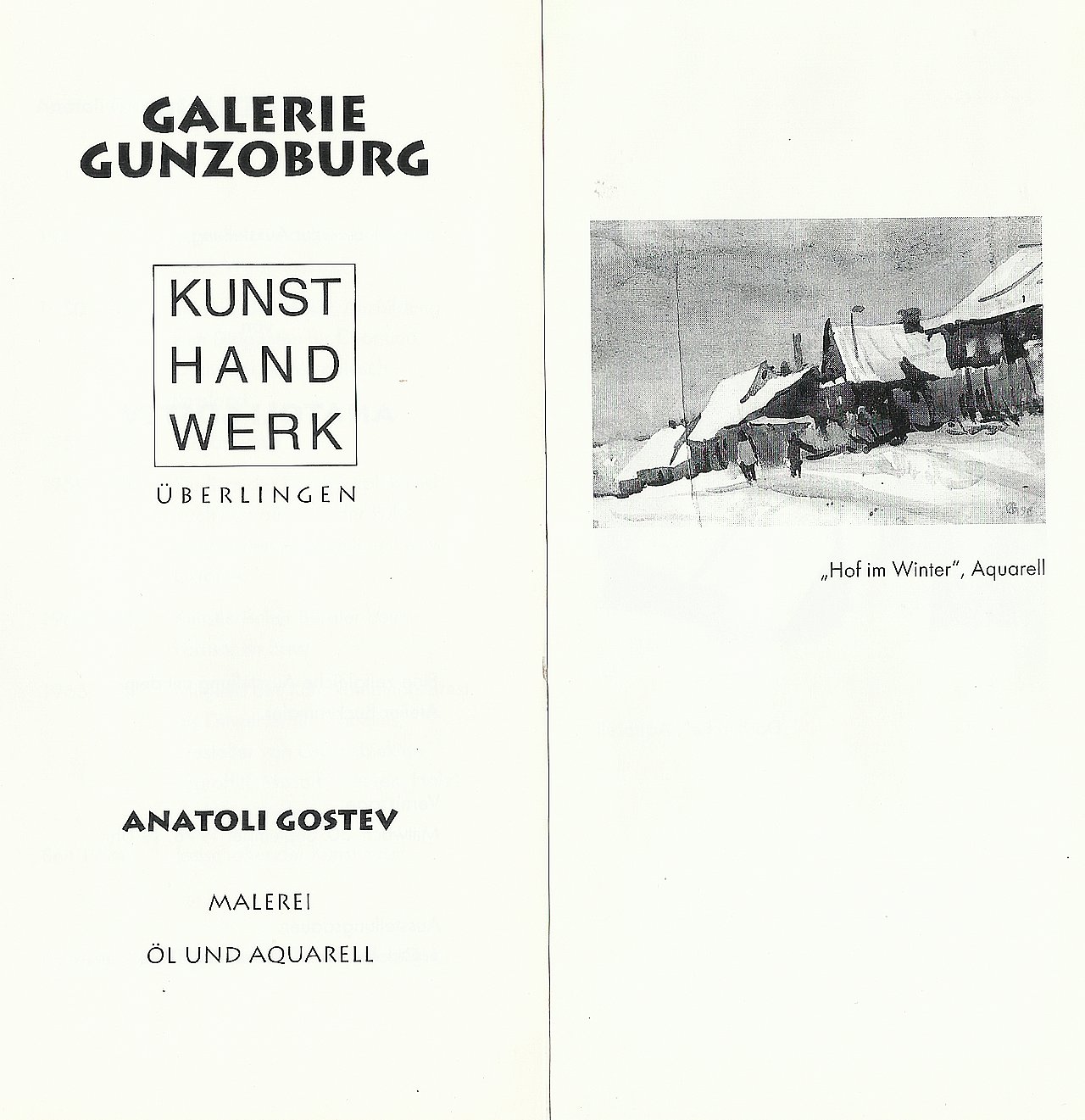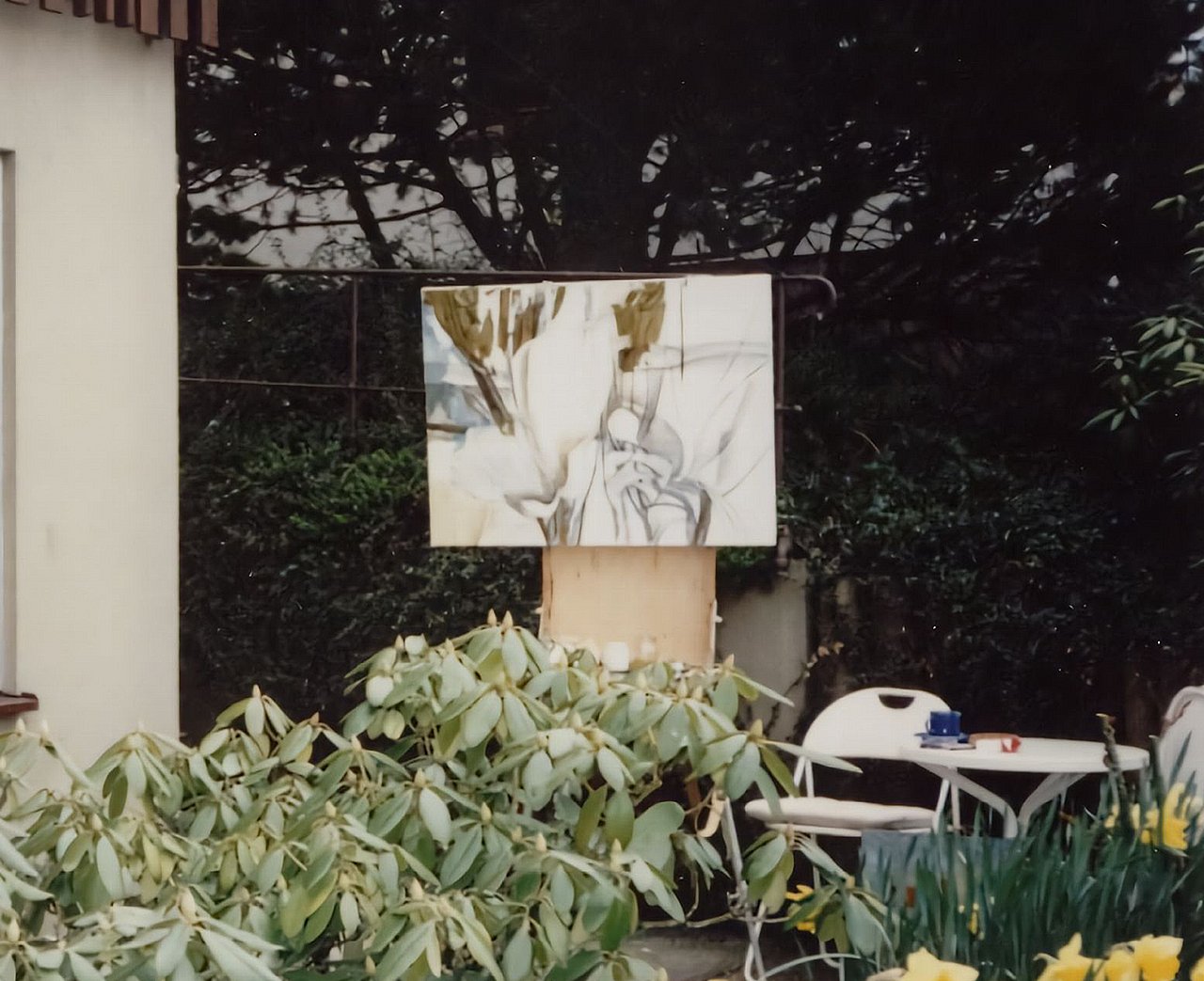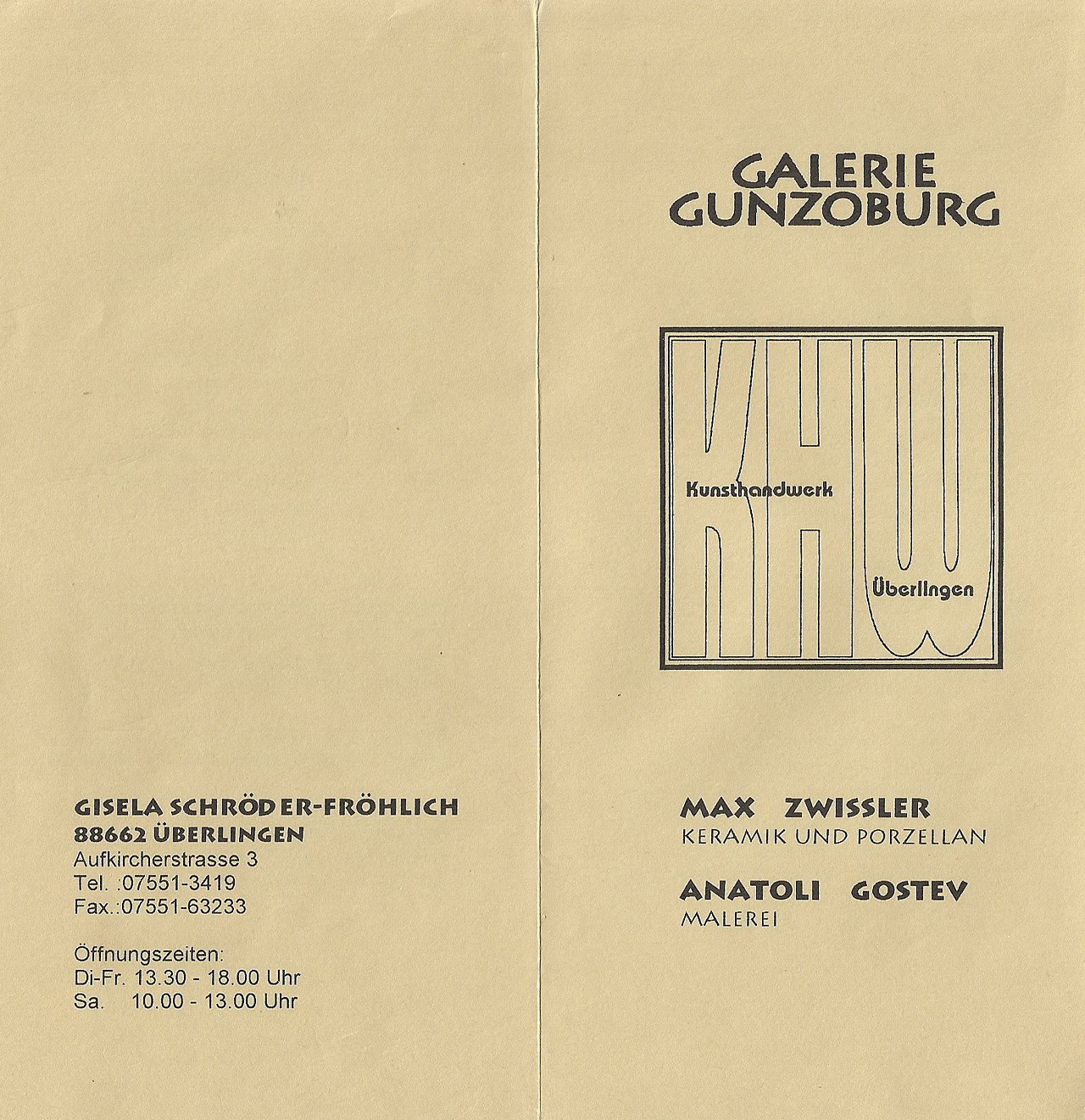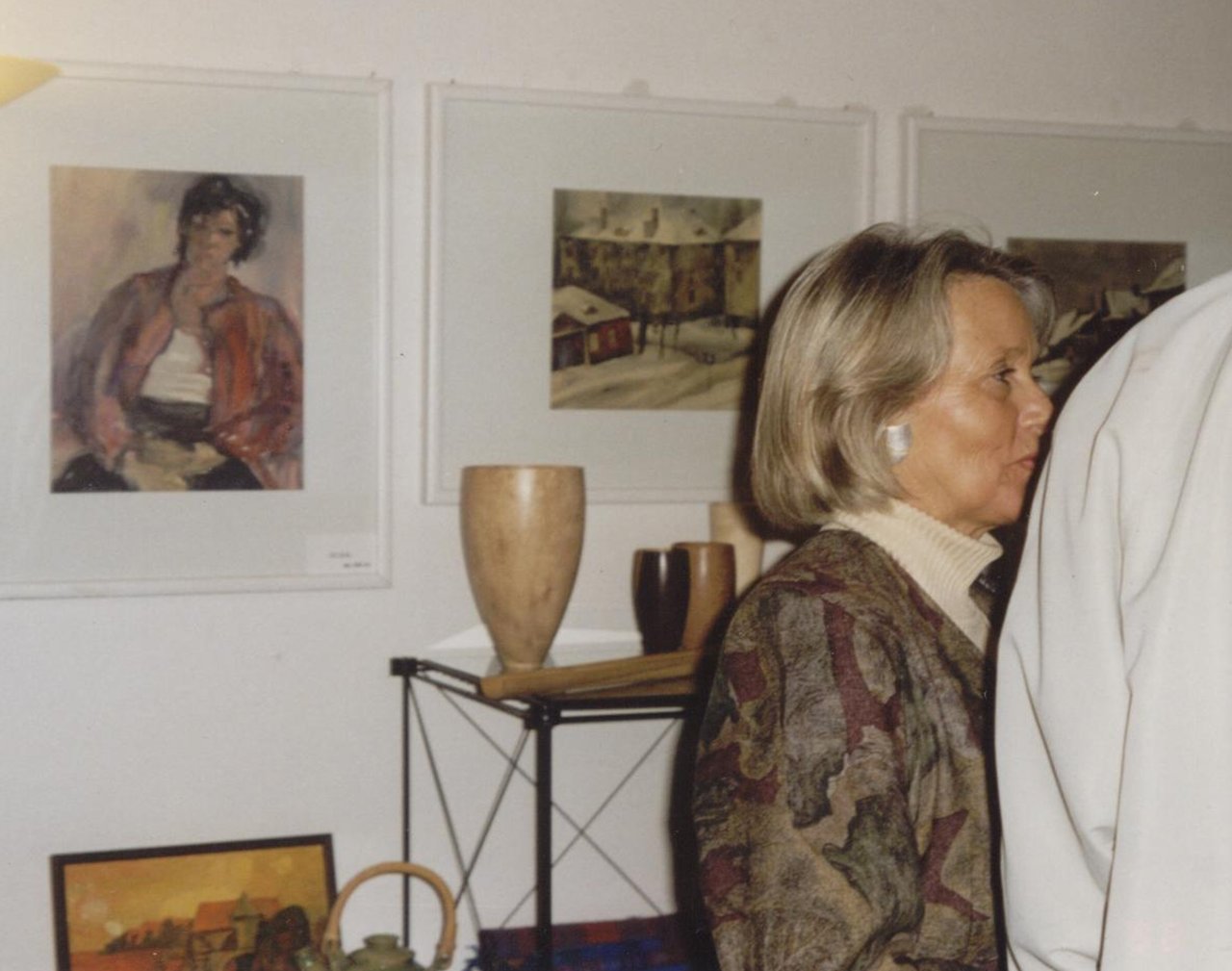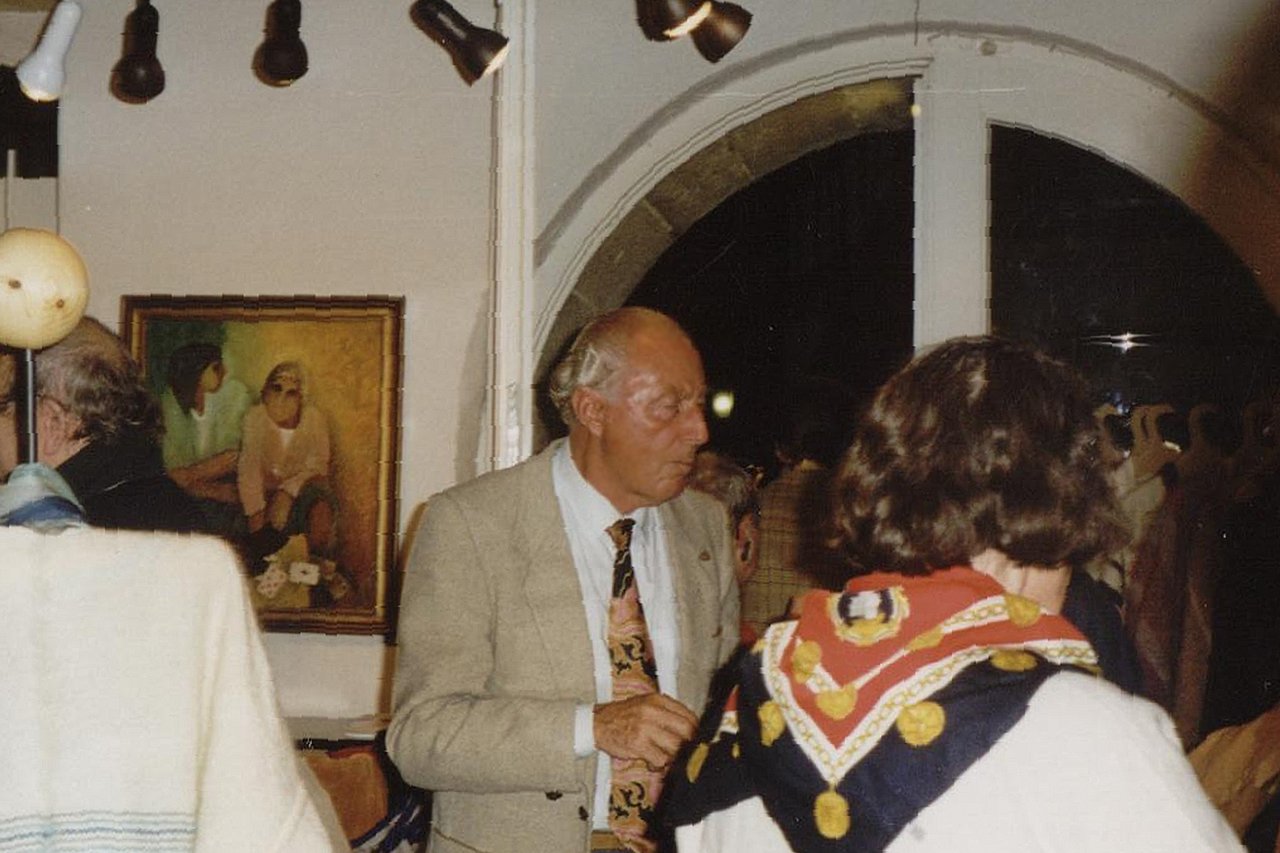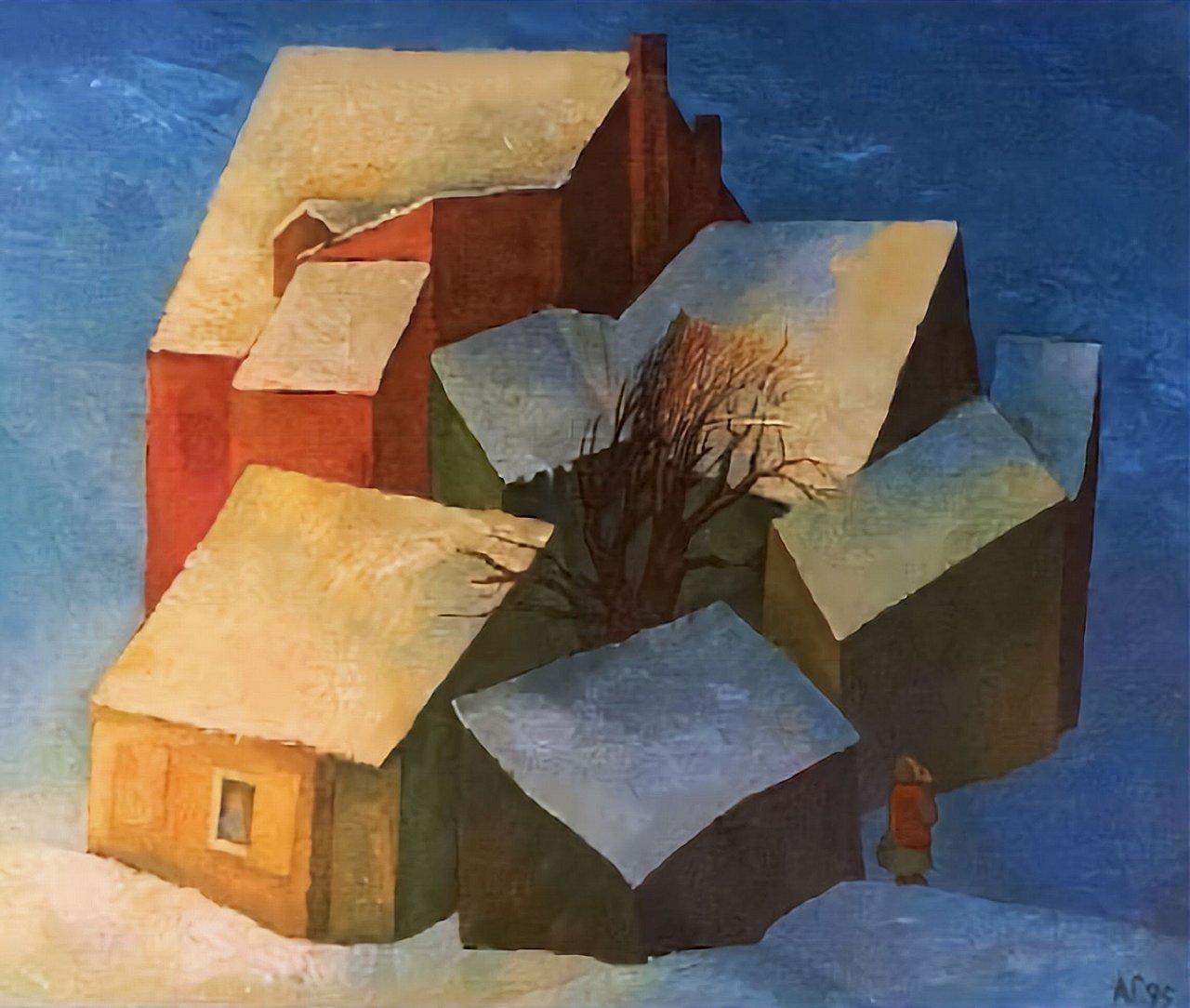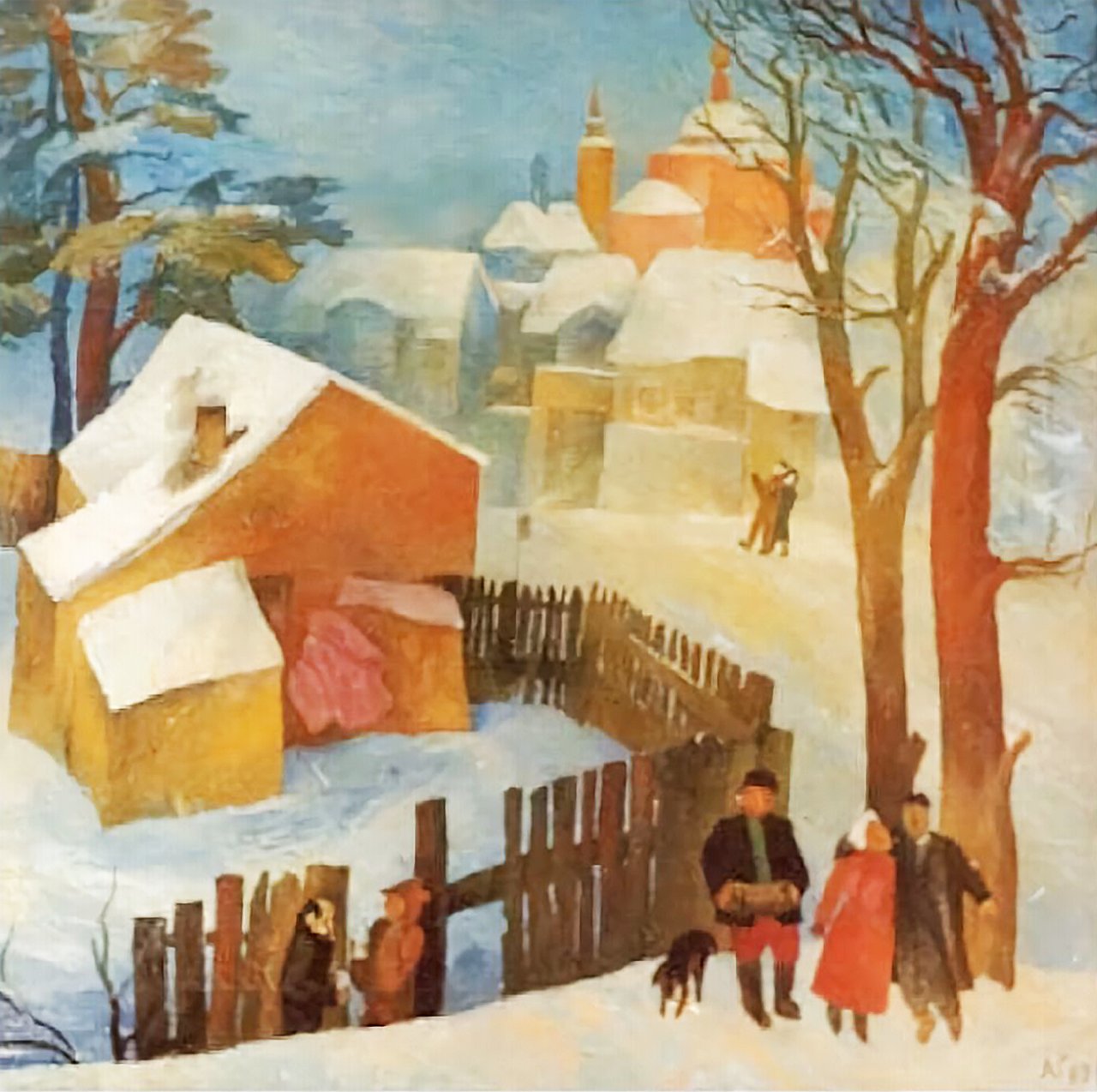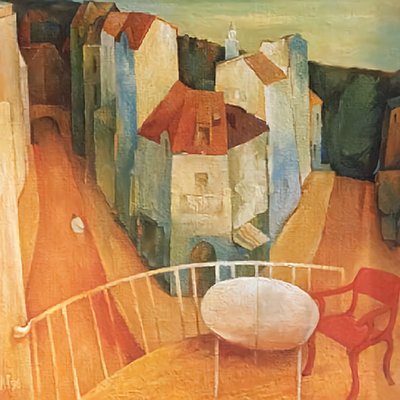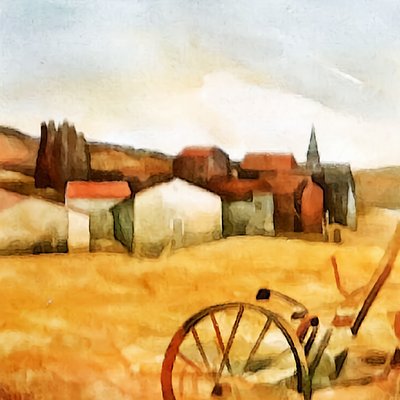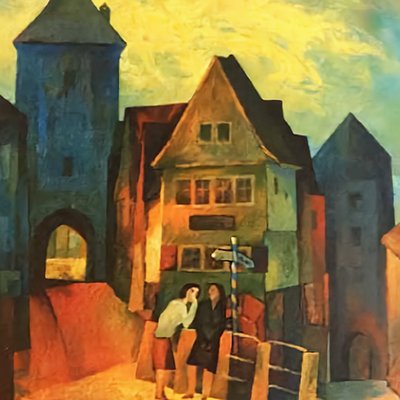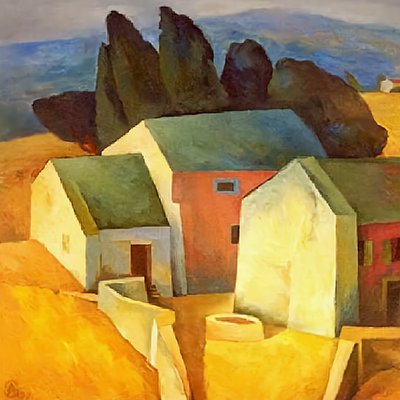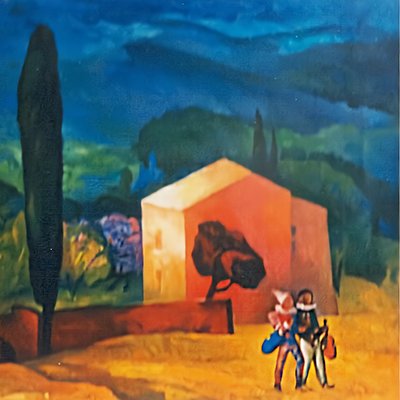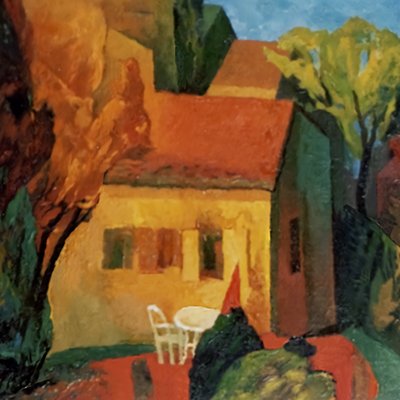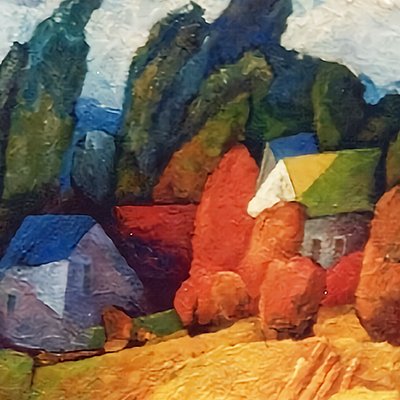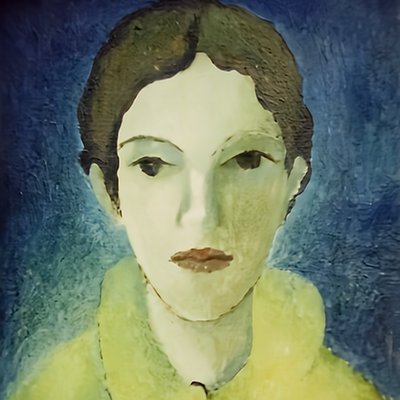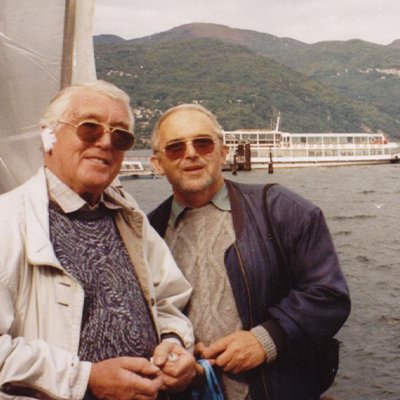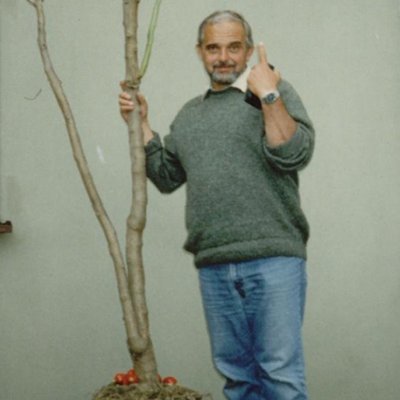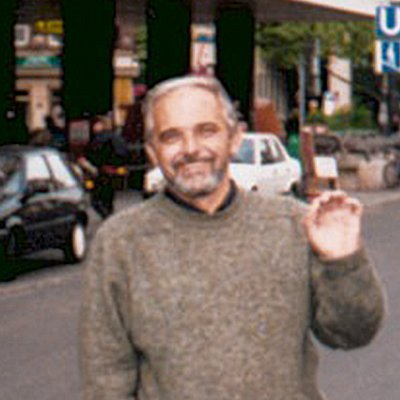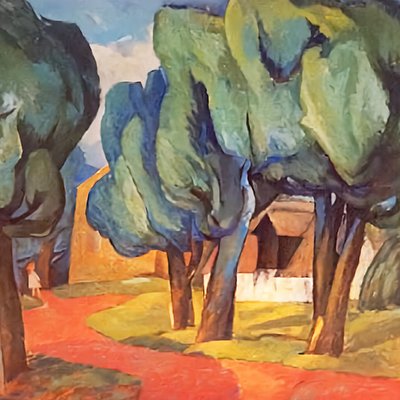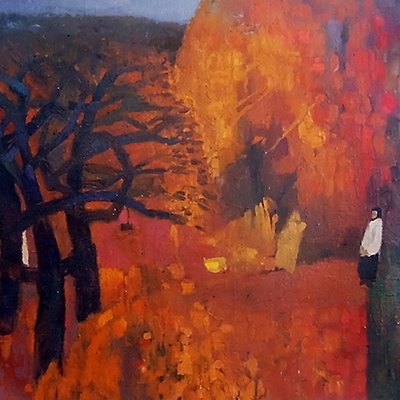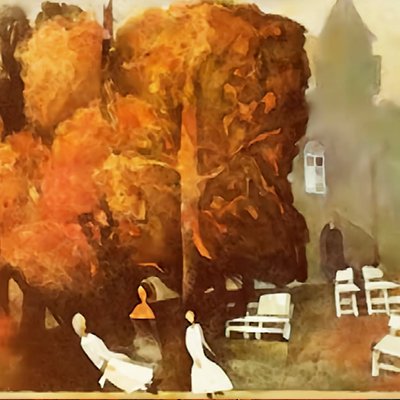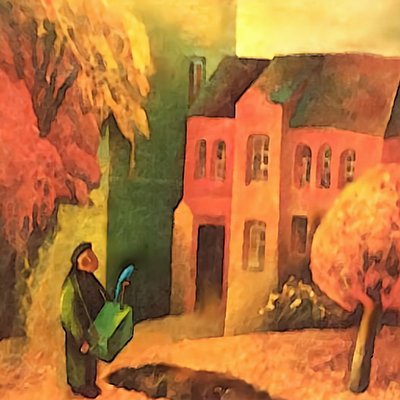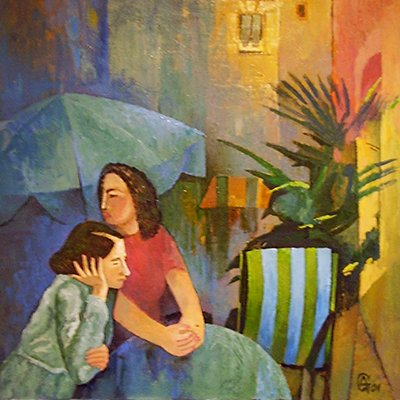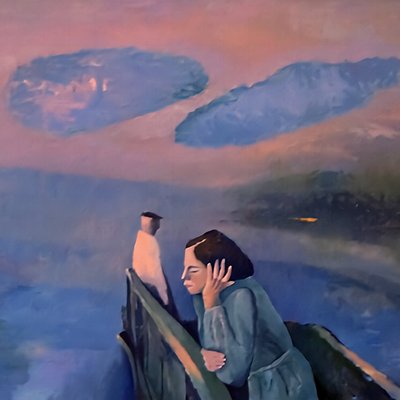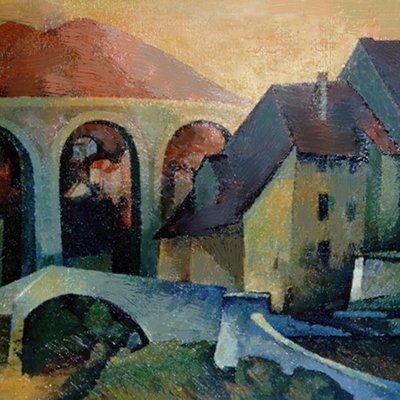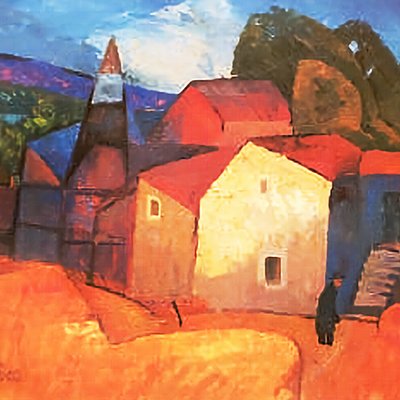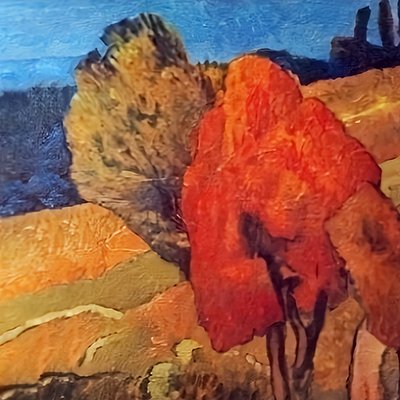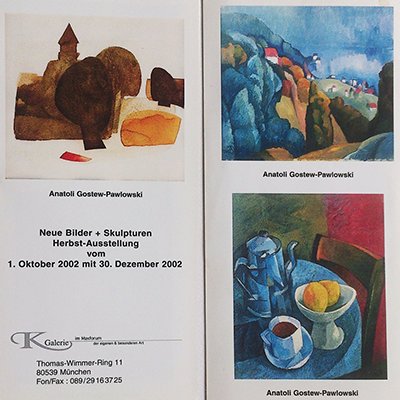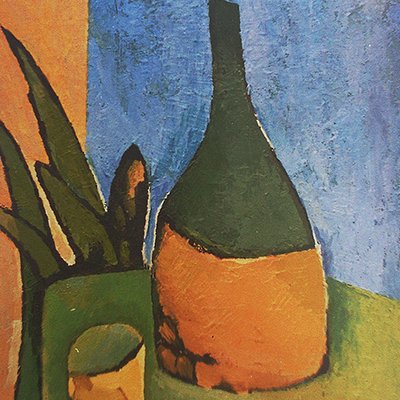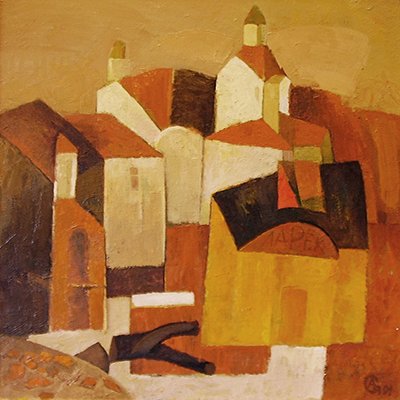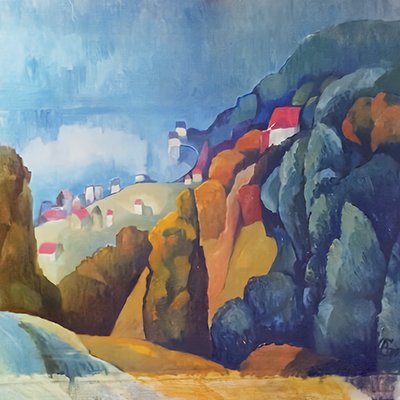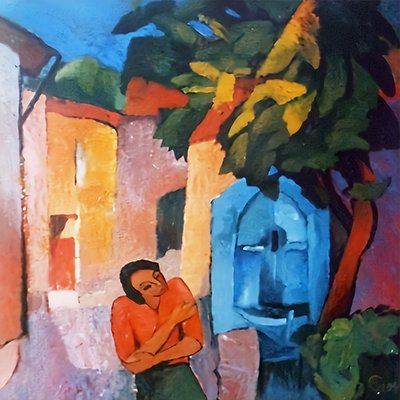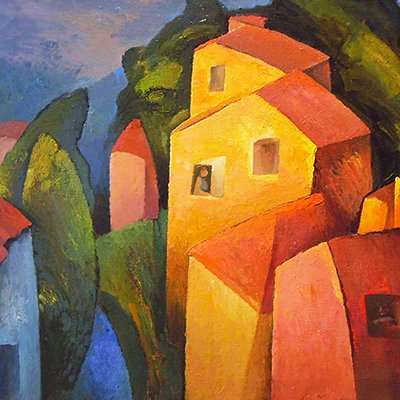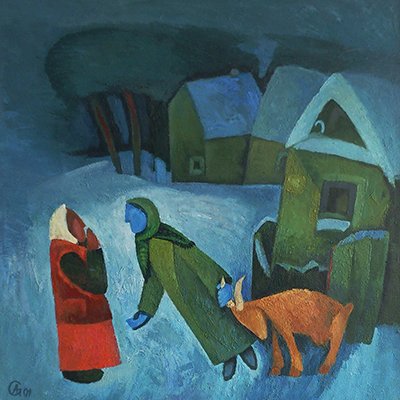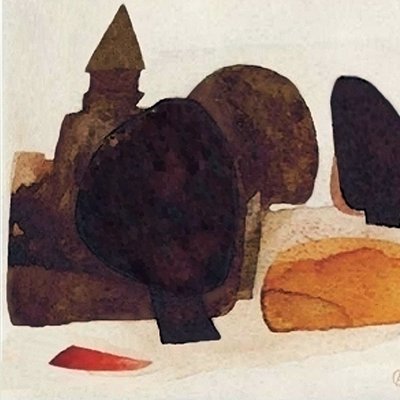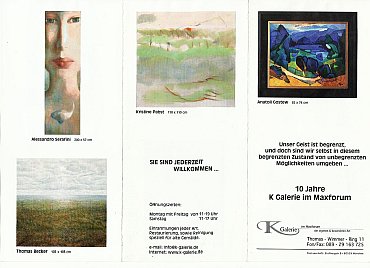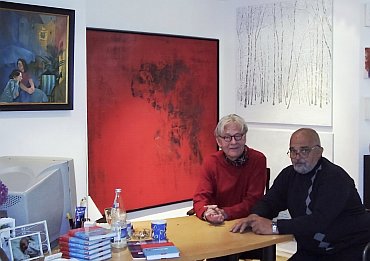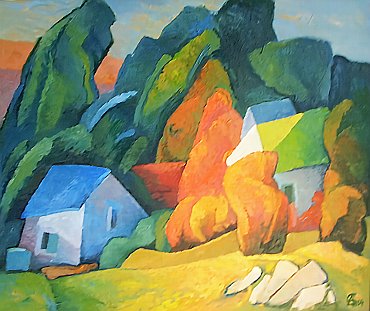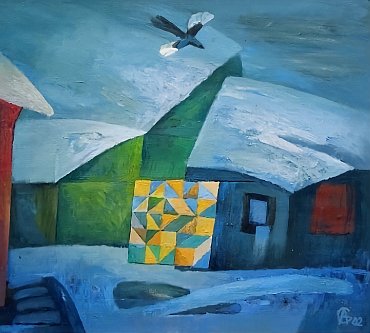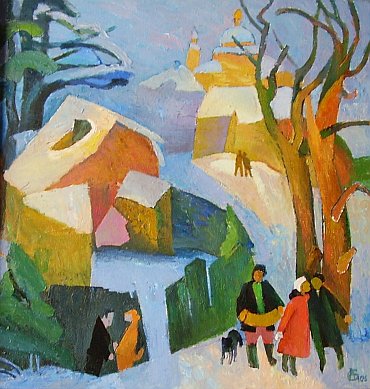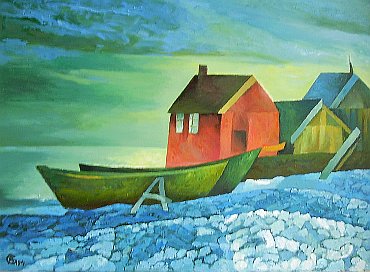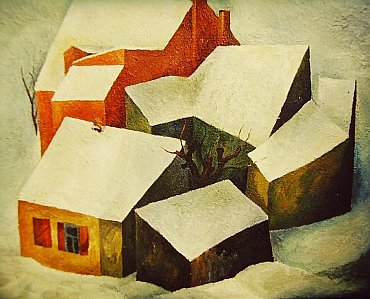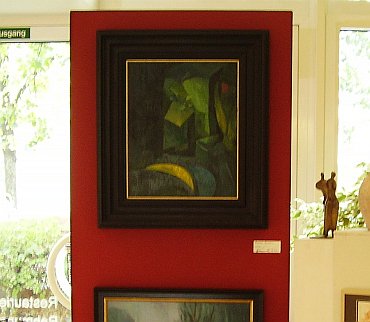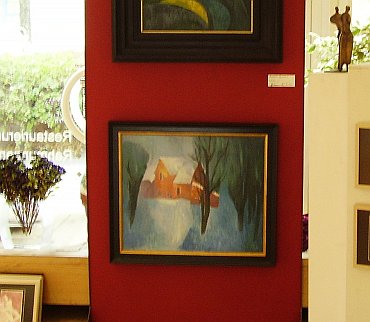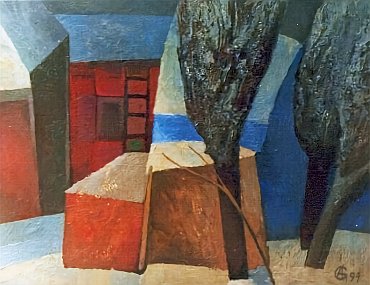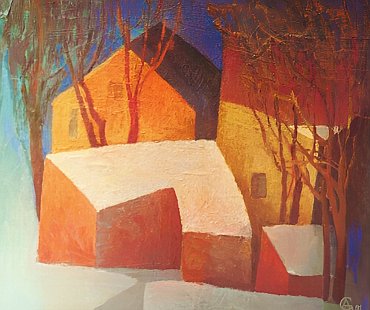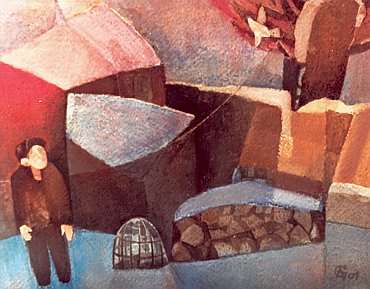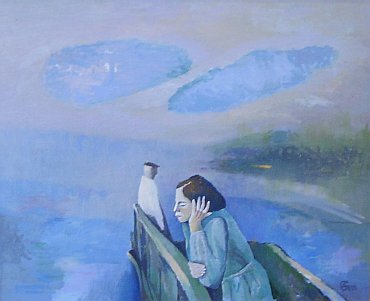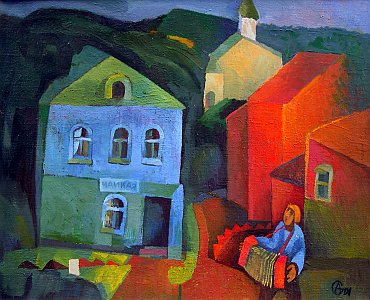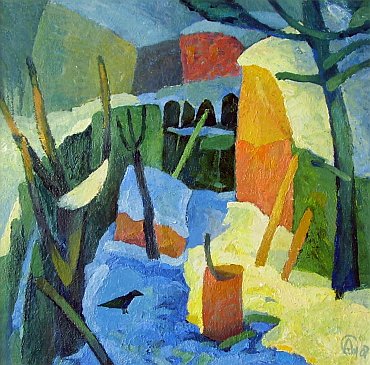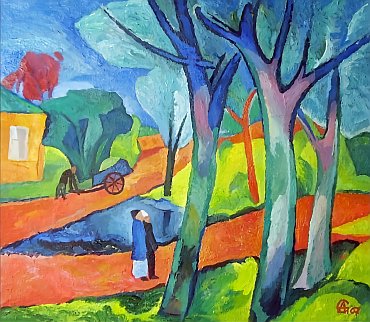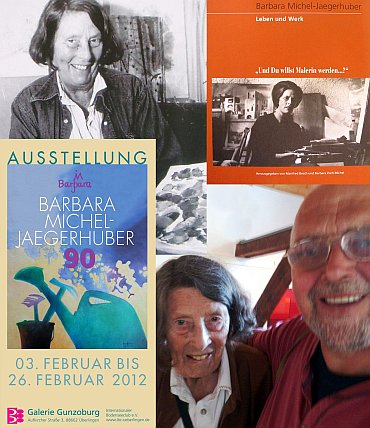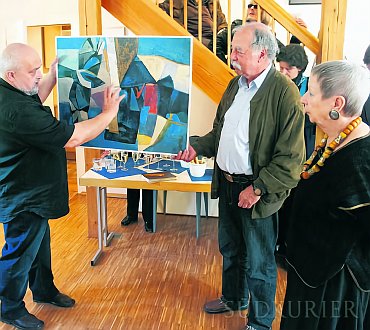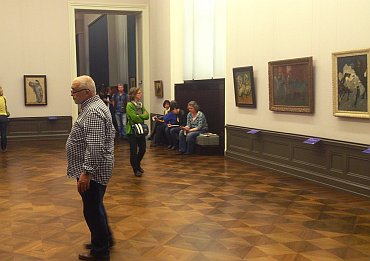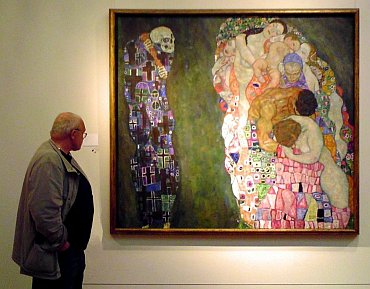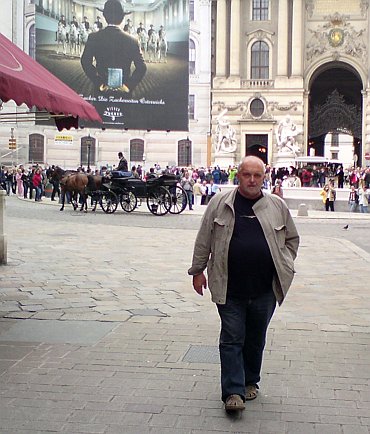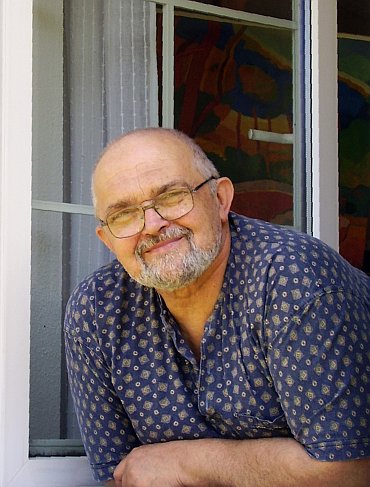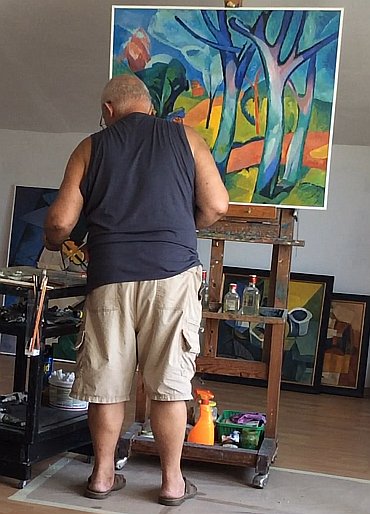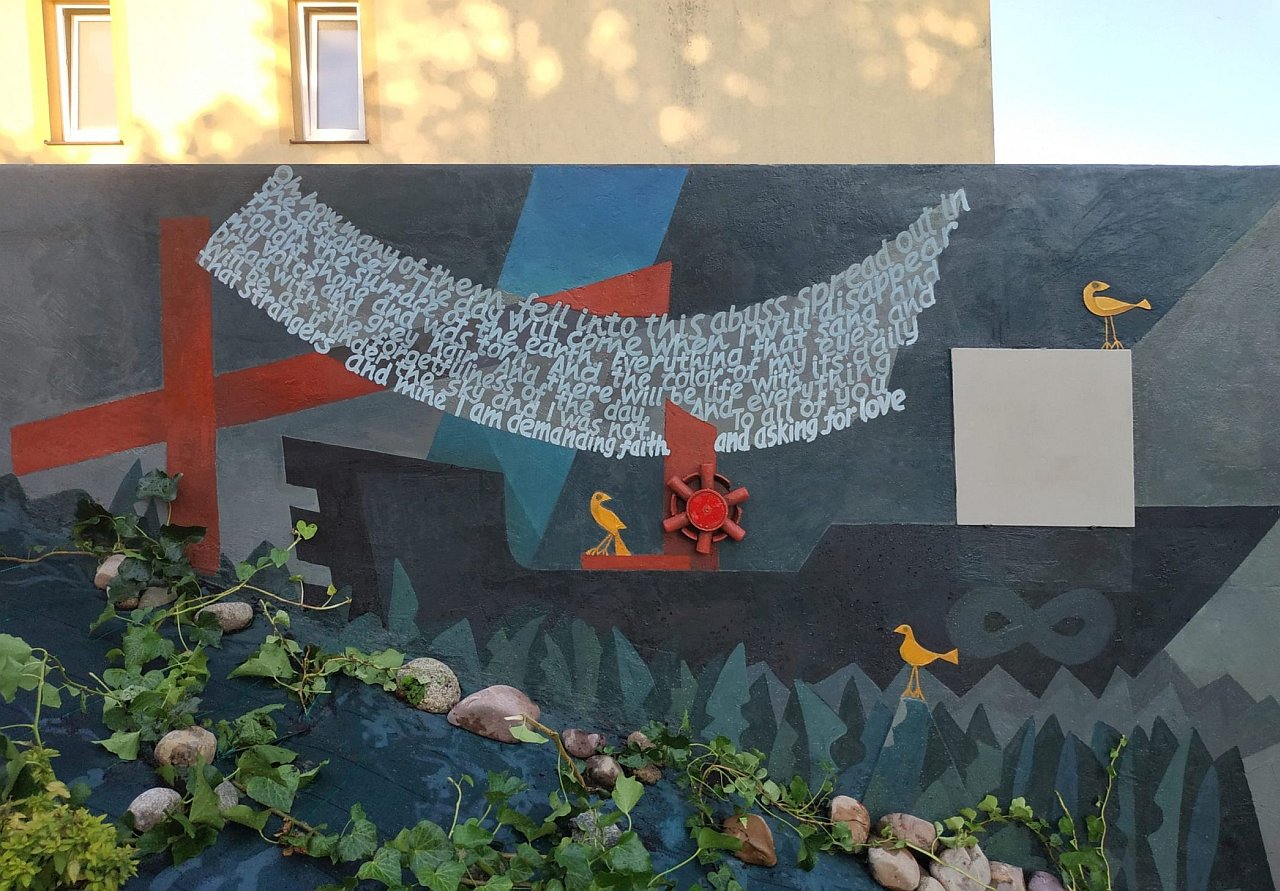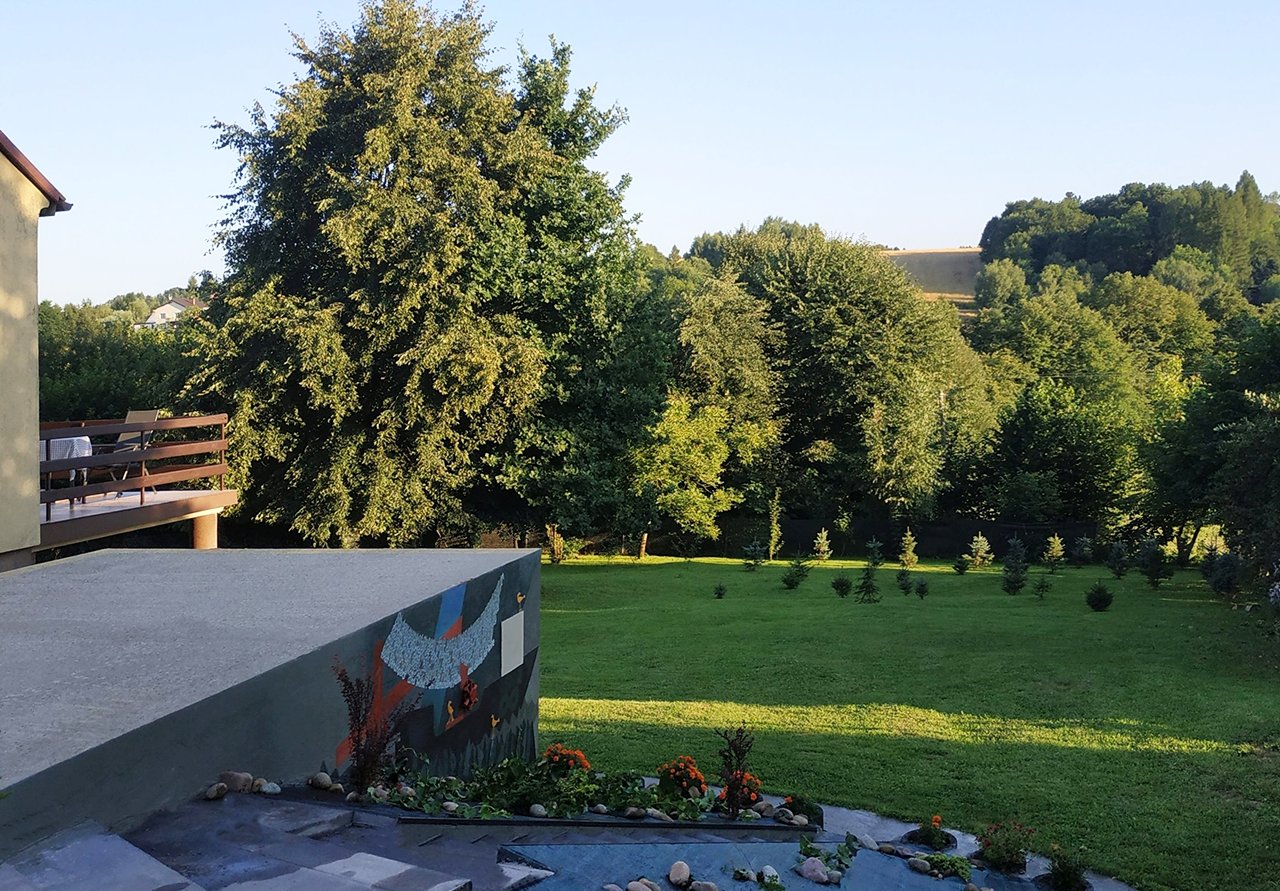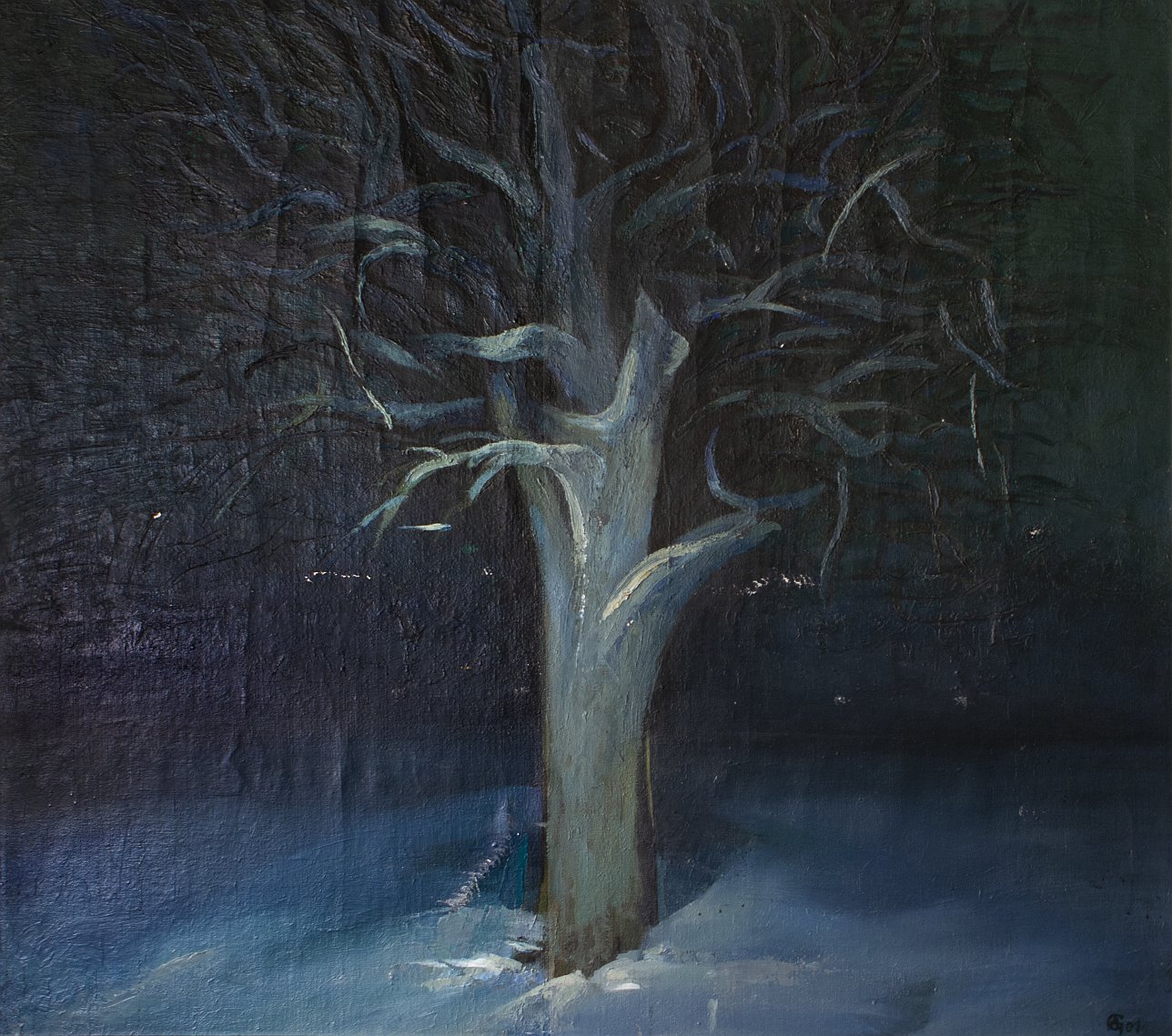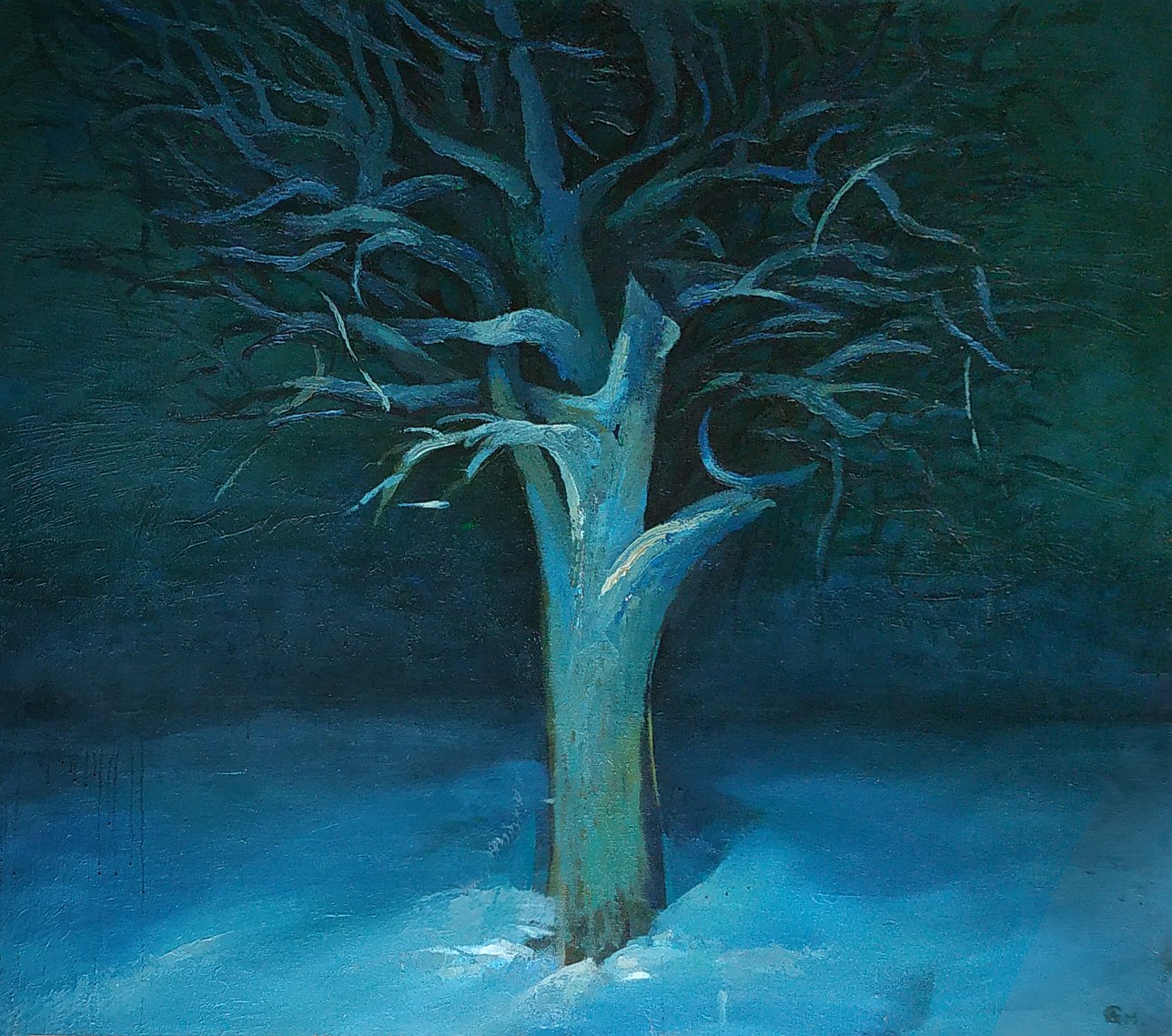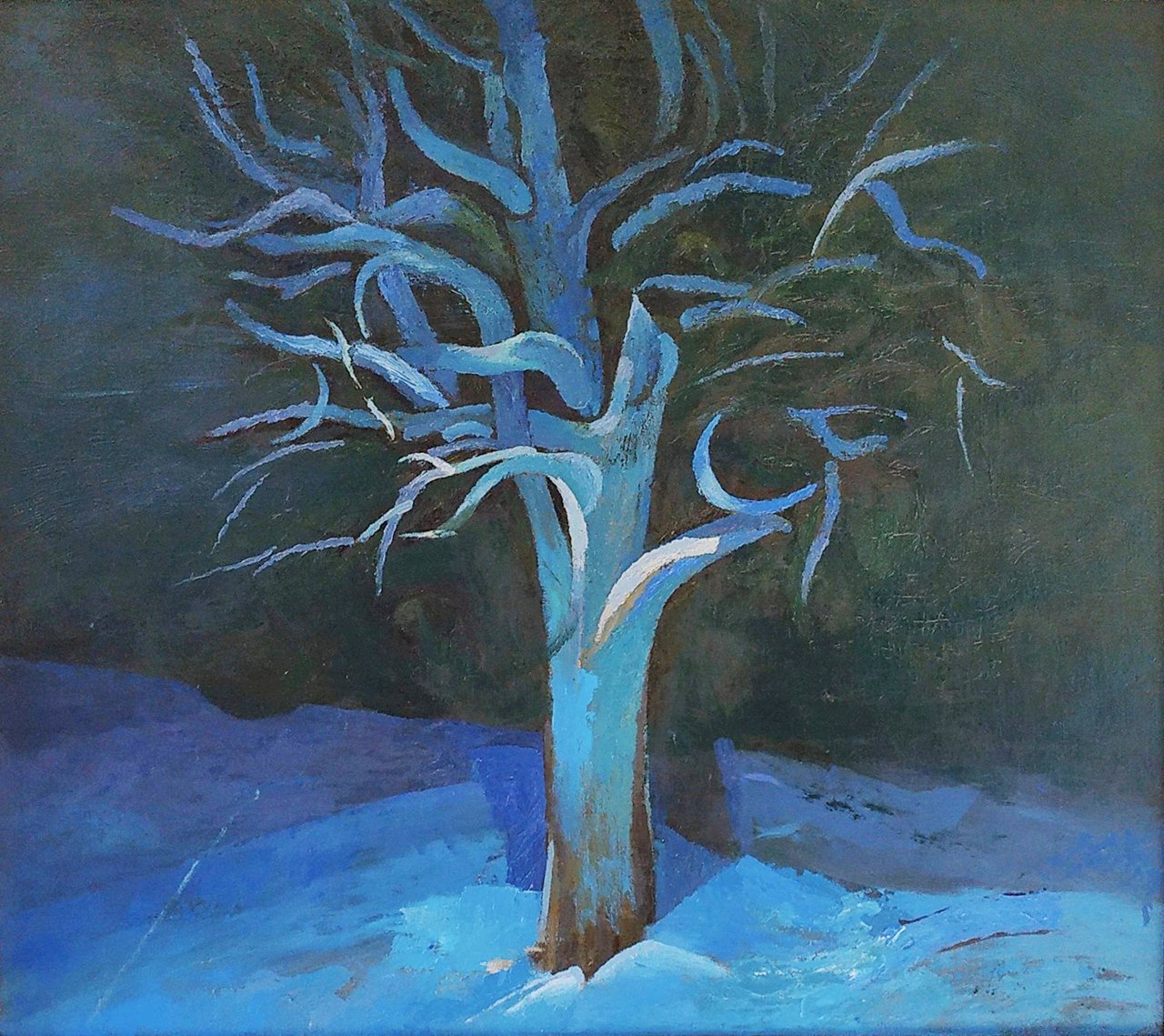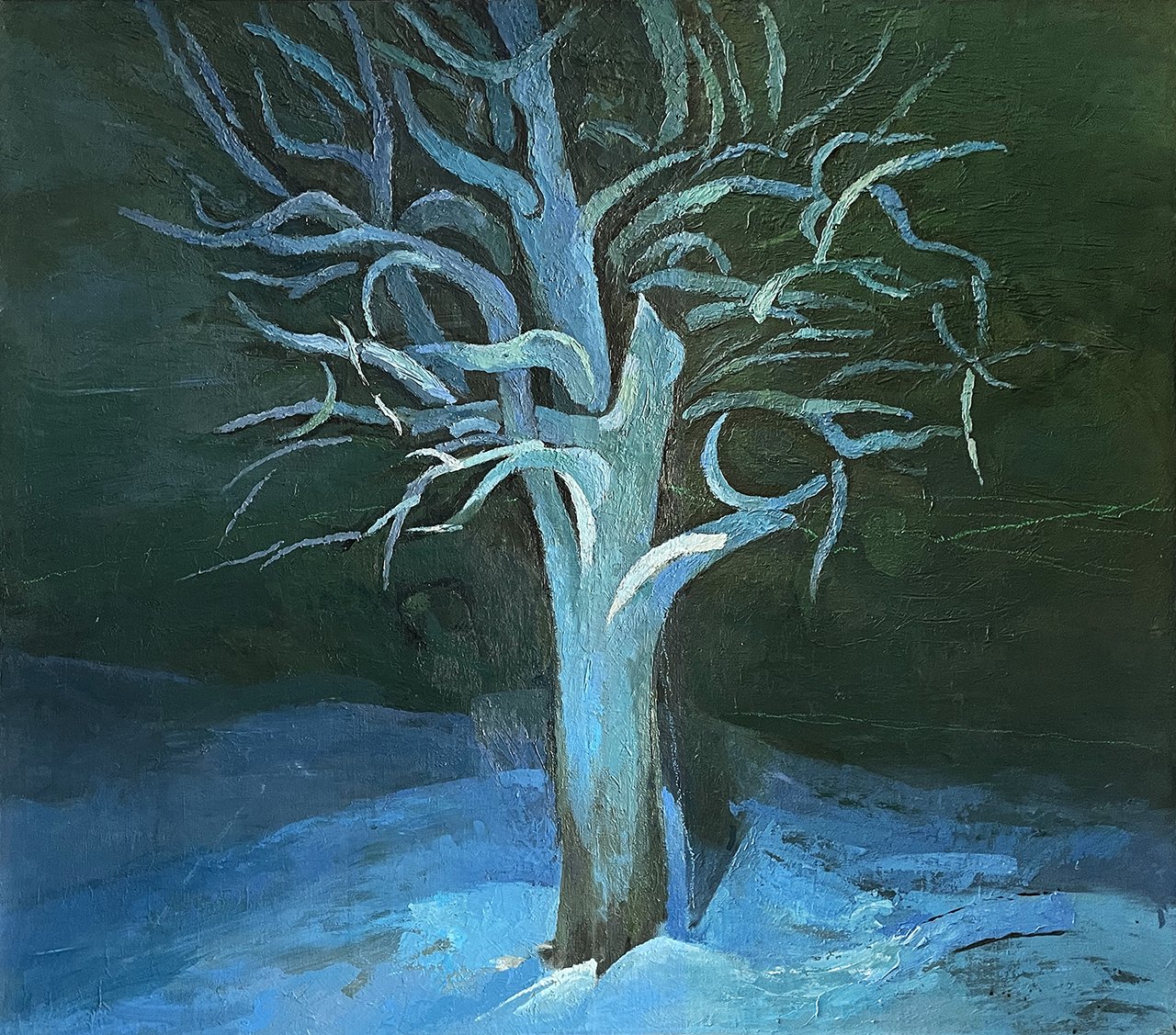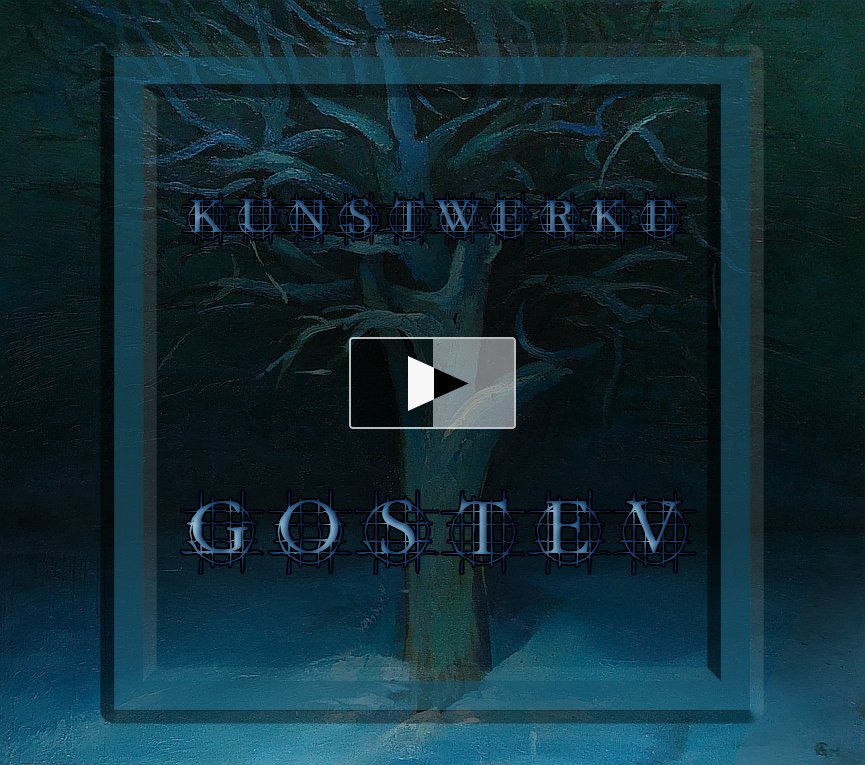Anatoli Gostev
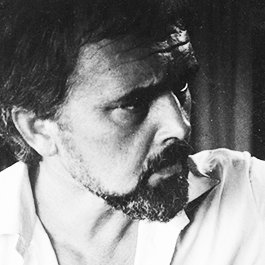
Born on August 23, 1946, in Brest, Belarus, Anatoli Gostev came from a family with a Polish mother and a Russian father. He received his education at the music school in Voronezh. Throughout his career, he worked as an artist, designer, and stenographer for a television studio.
From 1973 to 1997, Gostev was employed as an artist at the "Art" art production association. Initially, he focused on creating monumental works such as mosaics, frescoes, tapestries, and sgraffito, along with easel painting.
- From 1978 to 1993, he was a member of the Union of Artists of the USSR.
- Since 1994, he has been exclusively engaged in easel painting.
- In 1997, he permanently relocated to the European Union.
- Since 1997, he has worked as an independent artist.
Anatoli Gostev's works can be found in museums in Moscow, Minsk, as well as in private collections in Germany, Austria, Great Britain, Italy, Sweden, the United States, Poland, and Switzerland. Over his lifetime, Gostev created approximately 500 easel paintings, along with numerous projects and sketches.
Anatoli Gostev passed away on January 15, 2022, leaving behind a legacy of beauty and fond memories.
Brief Creative Biography. Exhibitions:
- From 1973 to 1996, participated in all regional, republican, and all-Union exhibitions.
- From 1993 to 2001, had a contract with Galerie Gunzoburg 88662 Überlingen.
- In 1995, had a solo exhibition with Zwissler Max at Galerie Gunzoburg.
- In 1998, had a solo exhibition at Galerie Gunzoburg.
- In 1999, had a solo exhibition at Dom Pracy Twórczej Ministerstwa Kultury.
- In 1999, had a solo exhibition at Atelier Buckenmaier 88662 Überlingen.
- From 2001 to 2002, had a contract with Galerie Wesner Abendbergweg 9, Konstanz, Switzerland.
- In 2002, had a solo exhibition at K-Galerie im Maxforum, Thomas-Wimmer-Ring 11, Munich.
- From 2002 to 2010, had a contract with K-Galerie im Maxforum and participated in all gallery exhibitions as a permanent artist.
- In 2012, had an exhibition at Sipplingen Bahnhof am Bodensee gallery.
- In 2021, participated as a special guest in the ART Climate Change | 13.09-8.10.2021 exhibition at Art Basel Centrum in Switzerland.
Below is a detailed artistic biography of the artist and links to the artist's official website, publications, and catalog of artworks.
Creativity and Biography
The post-war childhood of the artist was spent in a small house in Brest. His educational period began at the age of 4 when he learned to read. After reading all the books in the children's library, he moved on to the city library and continued his love for literature. In his early youth, Gostev also attended a music school for accordion and became involved in music. Later on, music, particularly classical and jazz, aided him in his creative quest in the language of painting. He began sketching with a pencil during his three-year military service in the navy, in a compartment of a submarine.
The Craft of the Artist.
The artist's career began in 1969 at the aesthetics bureau of a Soviet factory, where he learned the art trade, gaining experience and taste. Soon after, he married, but after the dissolution of his one-year marriage with his first wife, Tamara, he met Lyudmila, his second wife, with whom he had his only child in 1973 - a son named Anatoli. Love and an unbreakable bond would carry them through life.
From 1973, Gostev worked at the Art Combine, creating projects and executing reliefs, stained glass windows, marquetry, minting, mosaics, frescoes, tapestries, sgraffito, and other monumental works commissioned by the state. In his free time, he gained experience in easel painting and nurtured a vague desire to learn this captivating craft - to depict the world in colors.
Life in Studio 46A.
In 1976, the state allocated a studio to the artist - a spacious room on the roof of a nine-story building. He named it "46A" and lived and worked there. A year later, he experienced a rupture with his second wife there.
From 1977 to 1992, the spring of fate held him at the easel with easel painting: already a member of the Union of Artists of the USSR, Gostev was torn between the life of an ordinary citizen fulfilling artistic orders for a crumbling state and the desire to continue easel painting, the commercialization of which was impossible in Soviet society.
During this period, the artist was married twice more: a sincere belief in his own rightness would break his third ten-year marriage to Tatyana. Reflecting on the fatalism of secular women, he married for the fourth time to an artist.
In 1976, the state allocated a studio to the artist - a spacious room on the roof of a nine-story building. He named it "46A" and lived and worked there. A year later, he experienced a rupture with his second wife there.
From 1977 to 1992, the spring of fate held him at the easel with easel painting: already a member of the Union of Artists of the USSR, Gostev was torn between the life of an ordinary citizen fulfilling artistic orders for a crumbling state and the desire to continue easel painting, the commercialization of which was impossible in Soviet society.
During this period, the artist was married twice more: a sincere belief in his own rightness would break his third ten-year marriage to Tatyana. Reflecting on the fatalism of secular women, he married for the fourth time to an artist.
The constants in the artist's life remained his son and painting in Studio 46A. Years later, he would paint a picture about it called "Tolya's Corner."
Experience of the Great Masters.
In the nineties, the artist's first large-scale works in easel painting emerged through the study of the experience of the great masters. The artist recounted how his socialist-realist colleagues criticized him for painting two works "in the manner of Bruegel." To which he replied: "Better in the manner of Bruegel than in the manner of you." And in addition, he painted "Still Life of the Neutron Era," borrowing the image of Giovanni Arnolfini from Jan van Eyck.
Gostev's paintings were exhibited at all regional, republican, and all-Union exhibitions. For the absence of socialist realism and a certain melancholy in painting, he would not become an honored artist of a country standing in lines and imagining itself great in everything. And he would look westward both figuratively and literally - from Studio 46A, the western border of the USSR is visible. And his growing son will ask:
- Dad, why aren't they letting us go abroad? Is it because of our homeland?
- You were born on this planet, Tolya. This is your homeland.
The photographs of the paintings "Courtyard" and "Tolya and the Pigeons" were restored using artificial intelligence. The fate of these paintings is unknown.
The Beginning of the Journey to Europe
The year 1993 and the collapse of the Soviet Union bring new terms. Along with terms like "perestroika" and "glasnost," there emerge "sister cities." Among them is Ravensburg - Brest.
Fate kindly brings Gostev together with Galerie Gunzoburg in Überlingen, represented by Gisela Schröder and her husband Roland. Having received an invitation and obtained a visa, he travels for the first time to exhibit his paintings in Germany with colleagues from the "Art" art production association. Inspired by the new landscapes of Lake Constance, Gostev paints several new works on the spot - in Hedgen and Reichnau.
At the first exhibition of Belarusian artists in Germany, the Gunzoburg gallery signs a seven-year contract with Gostev for exhibitions.
Upon returning from Germany, he begins to contemplate and starts painting "The Last Tree." His fourth wife insists on moving to Moscow for commercial reasons. This immediately leads to divorce.
It must be said that everything that even put the artist on a small edge between painting and anything else disappeared after a short, checking pause.
Exhibition with Zwissler Max
Since 1994, the artist has been exclusively engaged in easel painting. Gostev paints a series of works in oil and watercolor, preparing for the next exhibition in Überlingen. In 1995, he brings a series of paintings, where the tendency to simplify details and focus on color palette is more visible. The exhibition takes place jointly with the master of ceramics from Swiss Bolshausen Max Zwissler. All of Gostev's works are instantly sold out to Germans, and "Sunday Stroll" flies to the United States.
The Schröder family, Gerhard Ketch, Max Zwissler, Sonia Tilman, and other German friends of the artist advise him to move to Western Europe.
Immigration
The years from 1996 to 1998 bring several fateful surprises: a meeting with his future, fifth wife Valentina, and relocation to Poland under the repatriation law.
At that time, it seemed that Gostev and Valentina were the perfect couple. Life in the new world of European democracy changes their usual routine. A jack-of-all-trades, he repairs the house and paints pictures. She looks for a job, having lost her previous position as a third-ranking advisor at the Belarusian customs. In this new world, he prepares for the 1998 exhibition in Germany, and both hope for a sensation and recognition. Gostev's painting during these years acquires a bright, clean palette, compositions become more conditional, and the color combinations - masterful.
Having painted about thirty works in a year, in the autumn of 1998, they bring a personal exhibition together to Überlingen. Gostev presents his future wife to German friends. The vernissage goes well, like the two previous ones, like, indeed, all vernissages of all artists. The Internet is not yet developed, the town is provincial, everything will be sold out, but everything is tied to one Gunzoburg gallery due to a great friendship with the Schroeders. It was a happy time of friendship, travel, love, and hope in the master's life.
After the autumn exhibition in Germany in 1998 and travels around Europe, they return to their Polish house in their own circle.
Exhibition at the House of Culture of the Ministry of Culture
In late 1999, Gostev holds a personal exhibition under the patronage of the Ministry of Culture of Poland in Radejowice, and it must be said, not entirely successfully. Perhaps it's the difference in mentality, perhaps the German prices. The Poles ask to lower the prices. Then Gostev takes back less successful paintings from Atelier Buckenmaier in Germany and exhibits them in Poland. He sells eleven paintings, as he says, getting rid of old paintings. In 2000, his son and his wife move to the West, and the artist becomes a grandfather. Life is not yet arranged as he would like, but he, like the Tree in his epic painting, is strong, steadfast, and almost eternal.
Atelier Buckenmaier Gallery
Since the beginning of 1999, Gostev has been exhibiting at Atelier Buckenmaier in Überlingen under the patronage of Gisela Schröder, starting with a solo exhibition. The works of that period of creativity are in shades of autumn and melancholy.
Contract with Galerie Wesner in Konstanz, Switzerland
Gostev signs a contract with Galerie Wesner until 2002; however, the gallery is focused on abstract painting.
The late XX and early XXI centuries in the artist's work are a progression toward understanding his own language. Painting becomes like jazz interpretation.
Munich and K-Galerie im Maxforum
2002. The artist brings his new works to Leo Gallery near the opera house, right in the center of Munich. While examining Gostev's works, the manager makes a call and, within minutes, wrote down an address saying, "With this gallery, also in the very center of Munich, you will be working."
A contract with the prestigious K-Galerie im Maxforum, located 200 meters from Marienplatz, was signed on the same day. The first exhibition - Anatoli Gostev-Pavlovsky (Pavlovsky - the maiden name of his mother, taken in favor of moving to Poland), the rest only Gostev. The German will not buy Pavlovsky, said gallery owner Klaus Uhtmann, but Russian Gostev - always. Jawlensky, Kandinsky, Chagall, Soutine taught to respect Russian art.
In Gostev's works of the new century, there is a development towards simplification with an emphasis on the main elements. Essence discards the insignificant.
Art of the New Century
Life in Europe gradually takes shape. Gostev himself builds the second floor of a house near Warsaw, goes on trips to his son's family. Rhythm is established in both life and painting. The path to simplicity without falling into abstraction seems to contrast with the new, increasingly complex age.
From 2002 to 2010, the artist collaborates exclusively with K-Galerie im Maxforum, participating in all exhibitions and vernissages. Gostev exhibits with Heidi Sazler, Jana Müller-Spitz, Paul Kaminski, Jacob Rusch, Alessandro Serafini, Thomas Becker, Kristine Pabst, Michael Westendorff, Günter Nennen, Mathias Dietze, Julie A. Gilburt. Klaus Uhtmann successfully manages the sale of paintings, while Gostev paints new ones.
The stability of nine years of cooperation with the prestigious Munich gallery of Klaus Uhtmann completely settled the artist's life in Europe.
Collapse and Disappearance of Paintings
In 2009, there were sixteen paintings by Gostev left in the K-Galerie im Maxforum. Before the new year 2010, Klaus writes a letter stating that six paintings have been sold, and then communication is cut off. After suffering a stroke, Klaus Uhtmann becomes incapacitated, and his son Olaf hastily closes the gallery. During the liquidation of the gallery, Gostev's paintings disappear. Klaus's son, Olaf, also goes missing. After requests for assistance to the Schratzlseer family, Claudia Schratzlseer finds and sends four paintings. The fate of the remaining paintings is unknown.
Klaus was a good friend of Gostev, and the artist knew that Uhtmann had health problems. He speculates that probably, Klaus used the money from the paintings for his treatment. Gostev regrets Uhtmann, the paintings, and the end of K-Galerie im Maxforum.
Below are images of the missing paintings. These paintings are considered missing or stolen.
After some thought and a bit of melancholy, Gostev will later rewrite "The Red Road," "Dacha in Winter," and "Night." Differently, much better. He will eliminate regret with the quality of painting, rather than seeking what was lost. They are in the artist's gallery.
Ten Years Before the Final Year
From 2010, true masterpieces are created under the brush and palette knife of the master. He seems to understand how simple it is to be an artist and will rewrite all the canvases he has in his studio, knowing and being able to do the main thing in painting - for it to be beautiful, and one can live with it, he says.
The artist will hold an exhibition at the Sipplingen gallery, on his beloved Lake Constance, visit the grave of his friend Roland Schröder and hug old acquaintance Barbara Michel Jaegerhuber. He will travel Germany far and wide, visit the best European galleries, admire Barcelona, Geneva, Avignon, Vienna, and the Balkans. He will never pass by the Czech Republic, where his family - son, daughter-in-law, and two grandchildren - lives.
Everything goes well for the artist from 2010 to 2015, until there is a rupture in relationships and an actual breakup with his fifth wife.
Balkan Rift
There is a peculiarity in the Balkans - everything gets cleared up, becomes clear. During a journey to the Balkans, a crack appears in the relationship with his wife. Upon returning home, they will live under one roof as neighbors. Soon, they will sell their house near Warsaw, which the artist loved, renovated, and expanded for 20 years, and buy another one. This hope for a change in landscapes and relationships will end in failure. Unfortunately, they will soon only avoid each other.
Three Birds of Hope
In 2020, Gostev will begin to sum up. He will paint a fresco on the wall of his house, disinherit his wife, who has become a stranger to him, and bequeath all his property to his son. He will refuse heart surgery and spend his days finishing the new house, and then, until late at night, he will correct his paintings, already understanding exactly how to finish them. Inside, he is like a tree that cannot be broken. The world is already starting to shake, but not him. Like a ship, unsuitable for sailing due to the impracticality of its details, he slowly, but already with a broken mast, sails towards the shores of endless hope for beauty, extolled by his painting.
2021 will be a quiet year surrounded by family. The artist will spend it with his son, daughter-in-law, grandson, surrounded by their love and care. By autumn, he will finish the fresco and write:
I am 75, and on the side wall of the barn, I wrote this message... This is my message to my loved ones and friends. Three birds of hope watch over my ship, but the mast of the ship is already broken, and on the torn sail is the great poem by Marina Tsvetaeva (in my English interpretation).
Exhibition at Art Basel Centrum
The artist will be invited as a guest of honor to participate in the ART Climate Change | 13.09 - 8.10.2021 Novum Investments exhibition in Switzerland, in Basel. The key painting of the exhibition will be his "Last Tree" - a work he painted for a quarter of a century, changing details. And although the painting fits the theme of the climate change exhibition, it has nothing to do with climate. It is a self-portrait of the artist, his self-identification. Due to known circumstances, the 2021 exhibitions took place online.
The Master's Final Painting.
In December 2021, Anatoli Gostev will nearly finish his last painting, naming it "The Last Ship". Two of his easels in the studio will remain with "The Last Tree" and "The Last Ship".
Twenty days after suffering a stroke on Christmas of 2021, he will depart from this world.
Anatoli Gostev will be escorted on his final journey by his son and his family, along with several close friends.
His son will fulfill some and continue to fulfill other of his father's covenants. †
gostev.org Gallery Articles Gallery in pdf
Anatoli Gostev Artworks Back